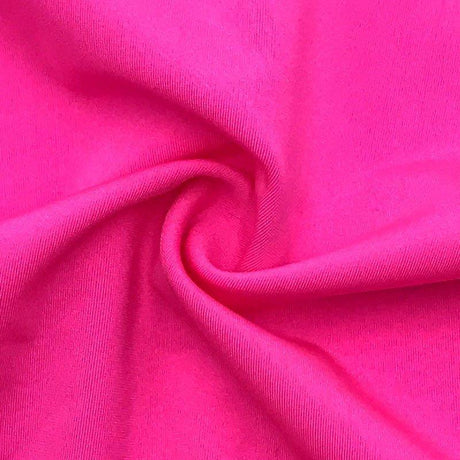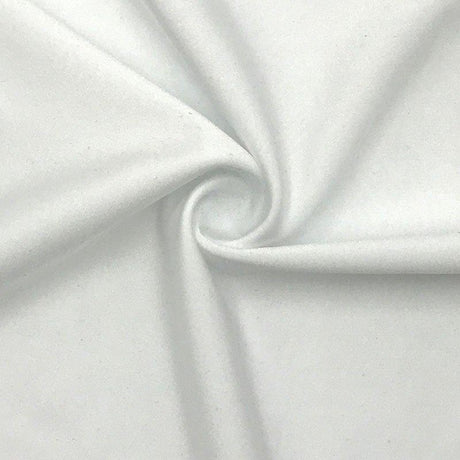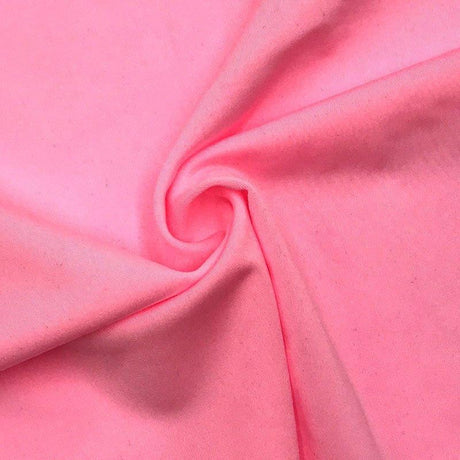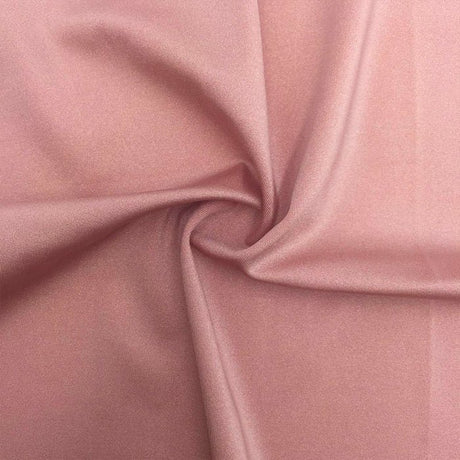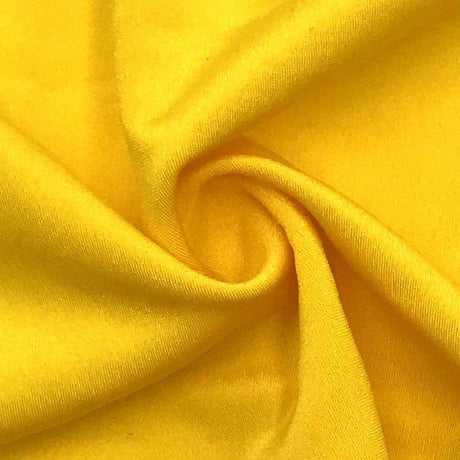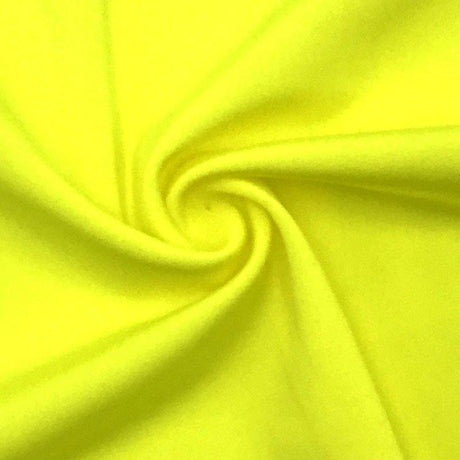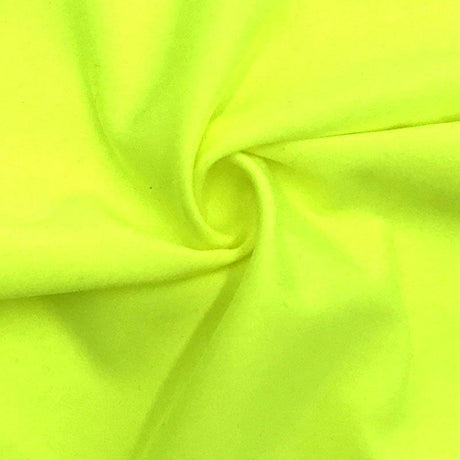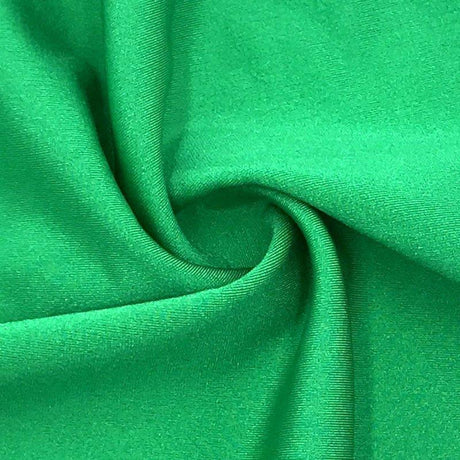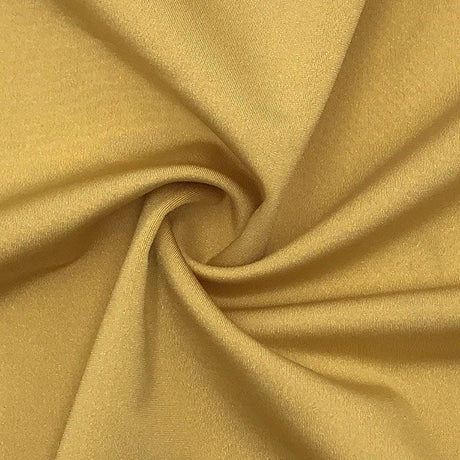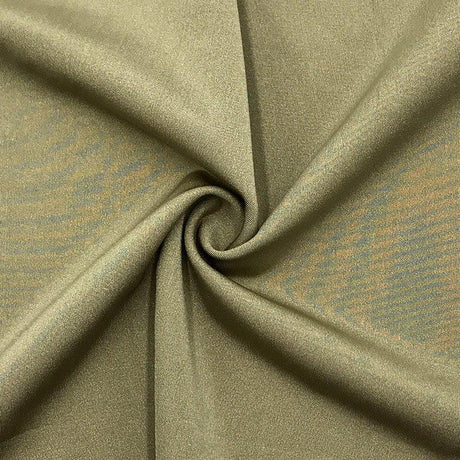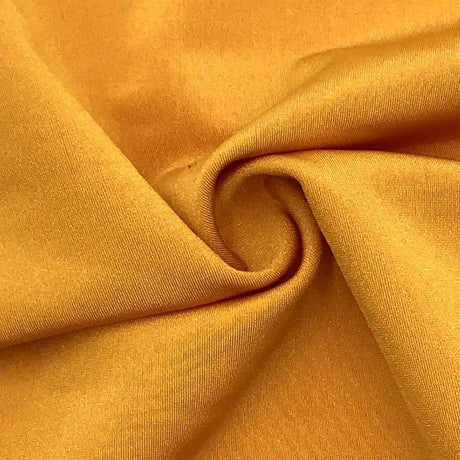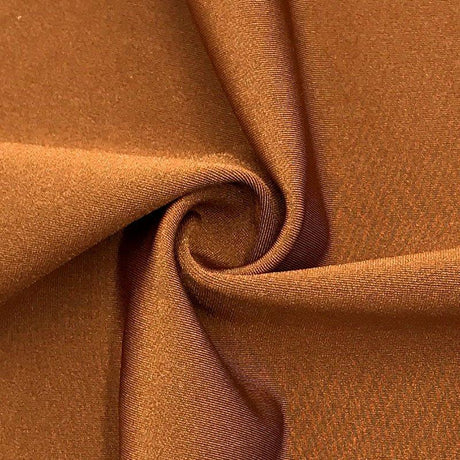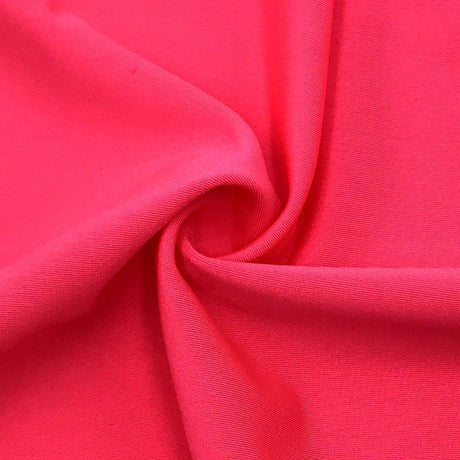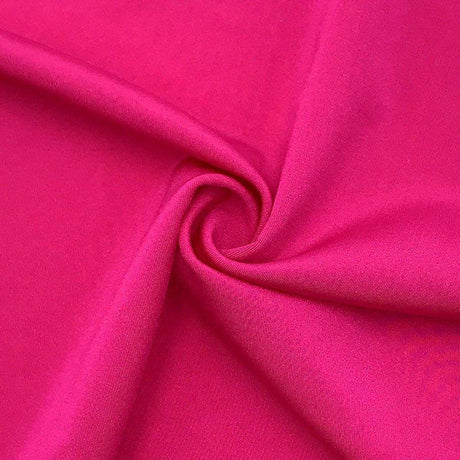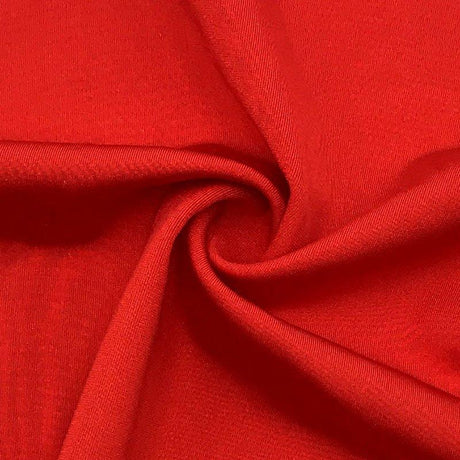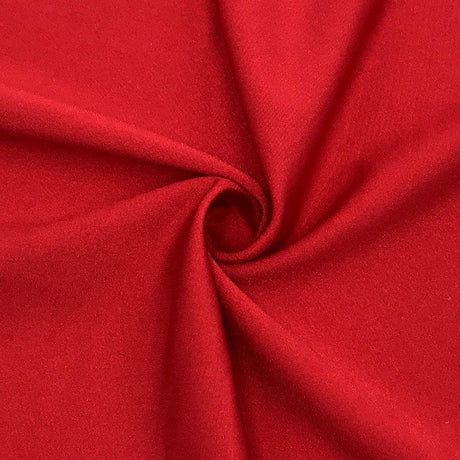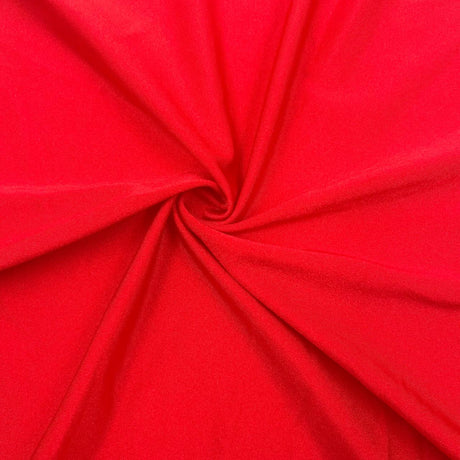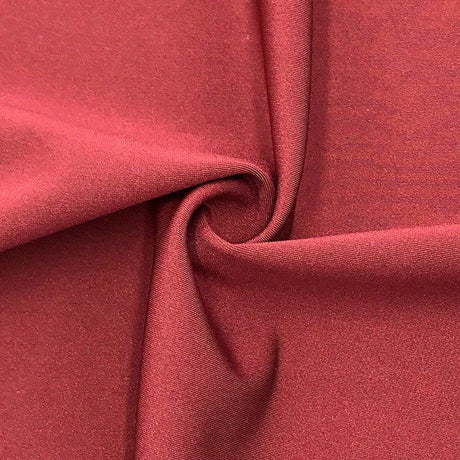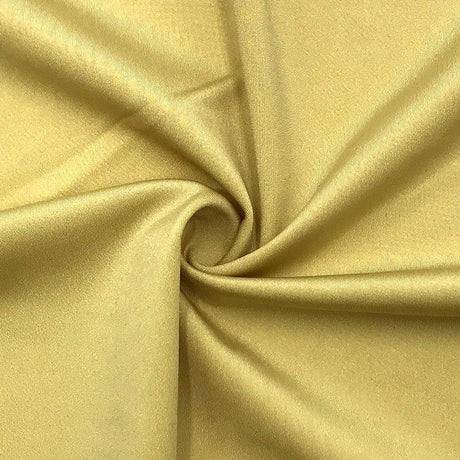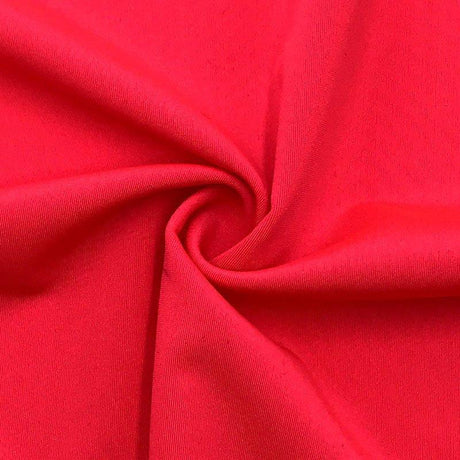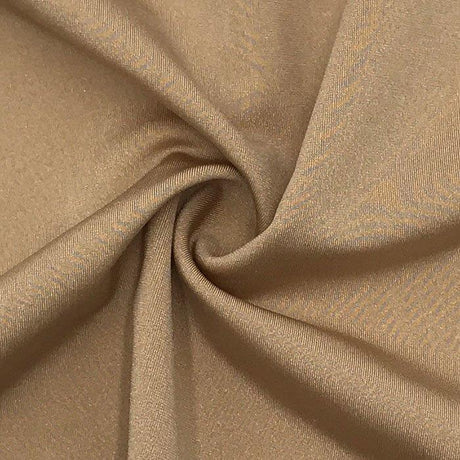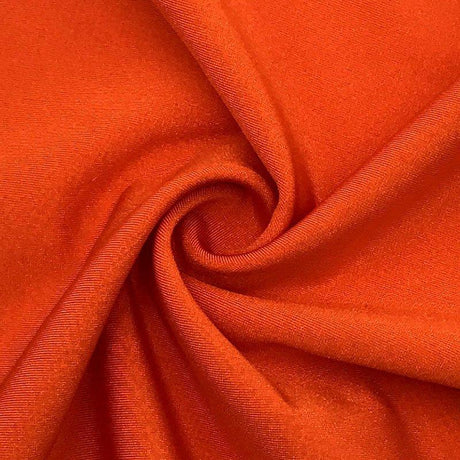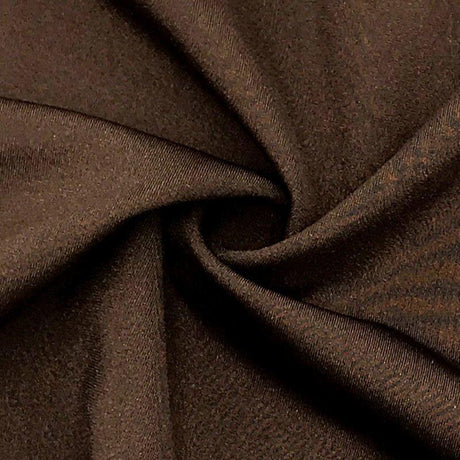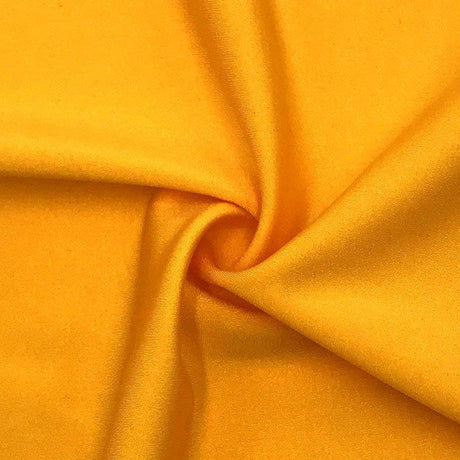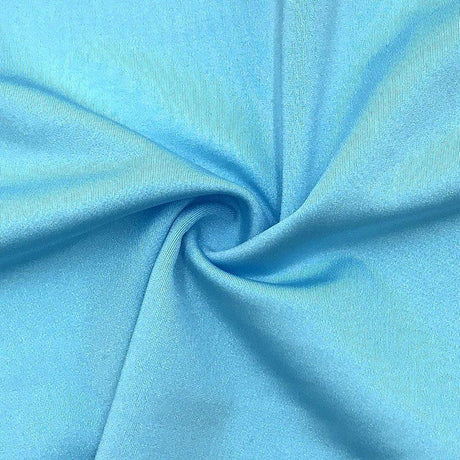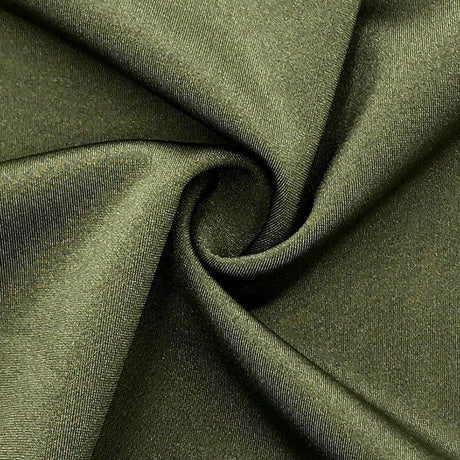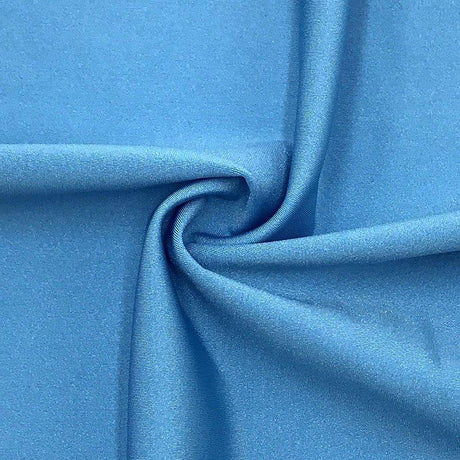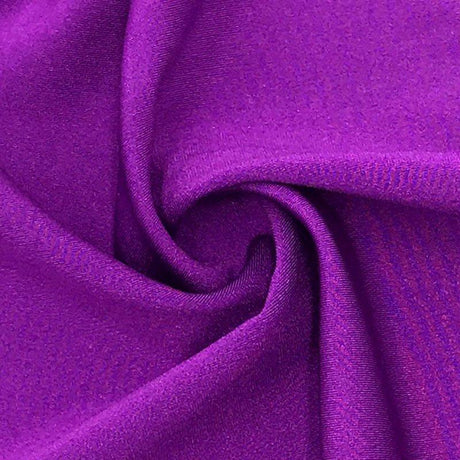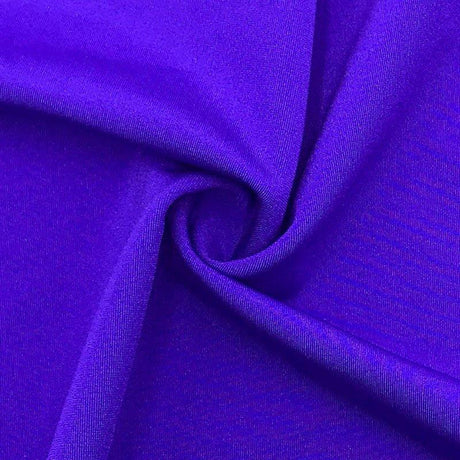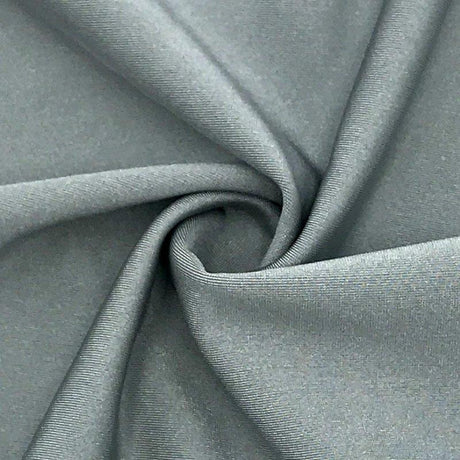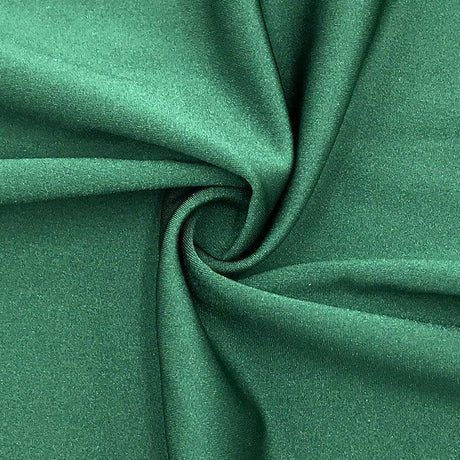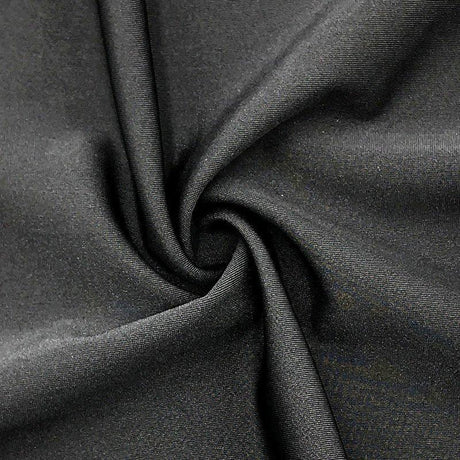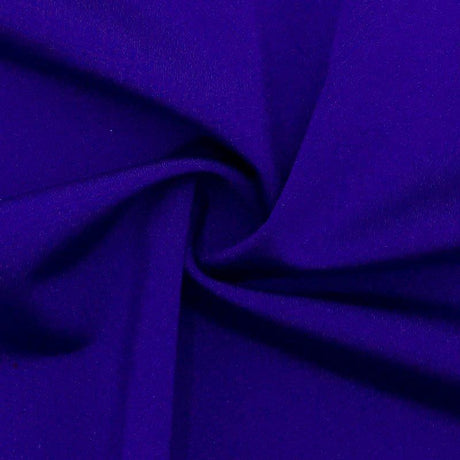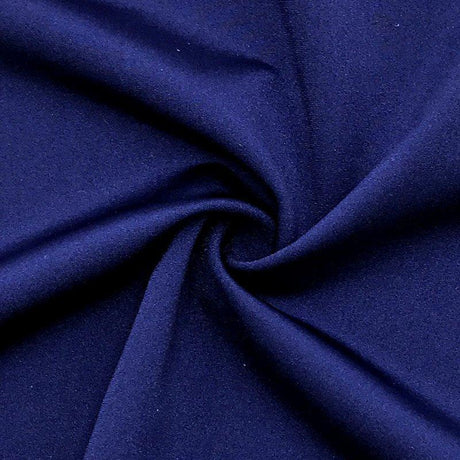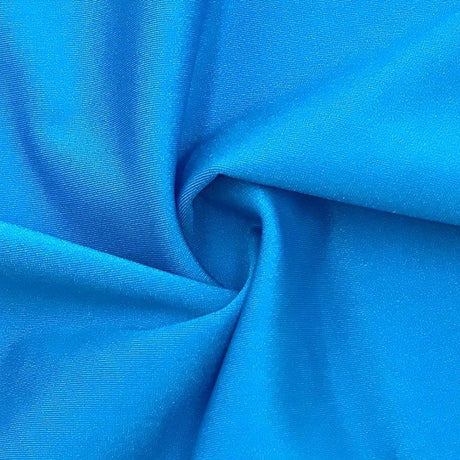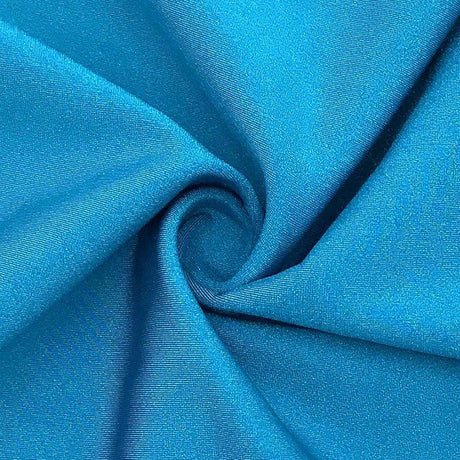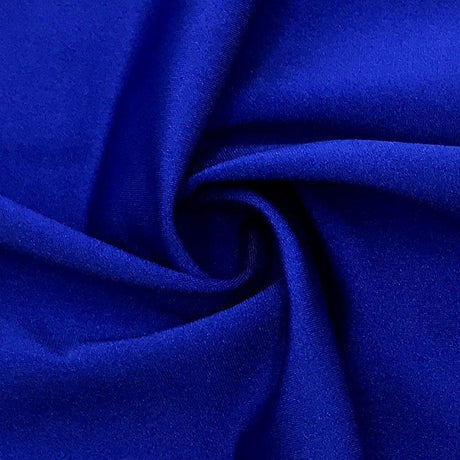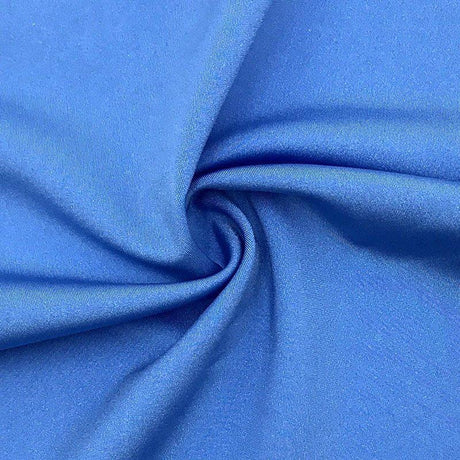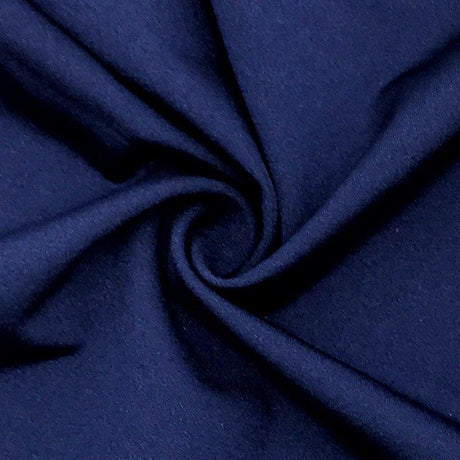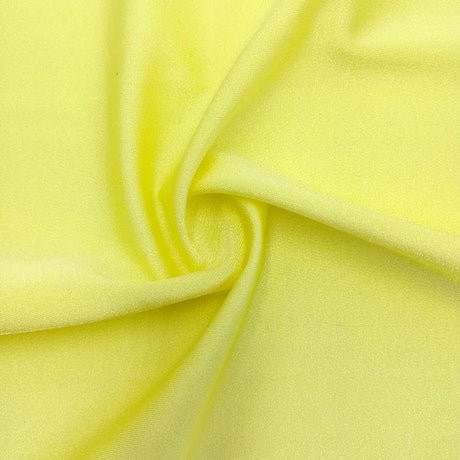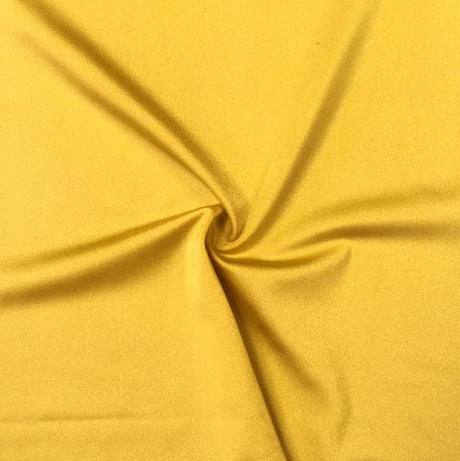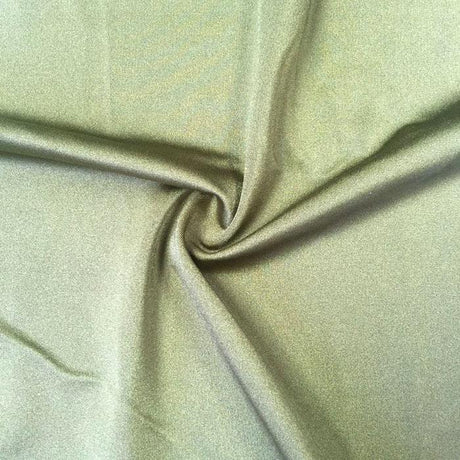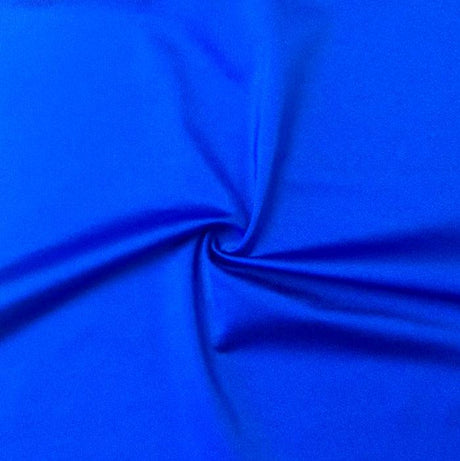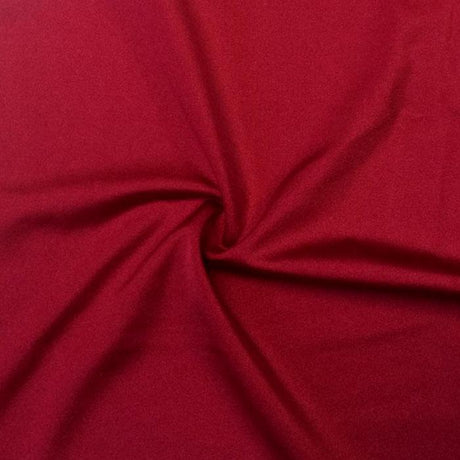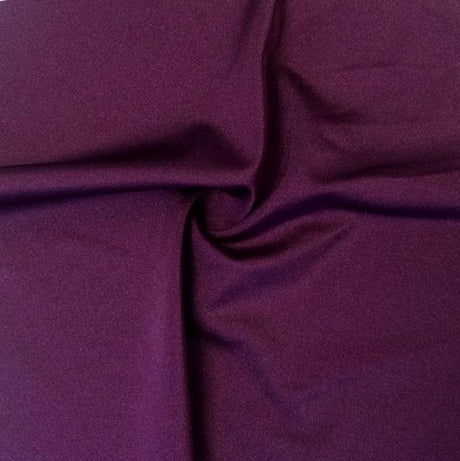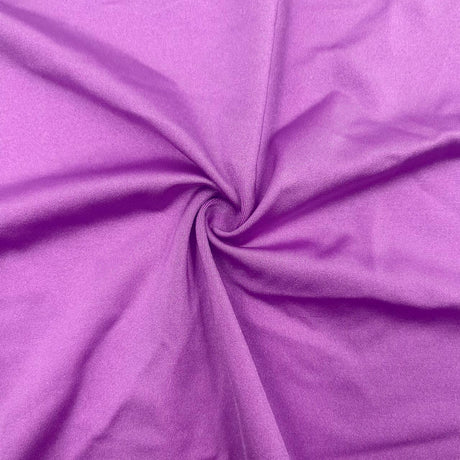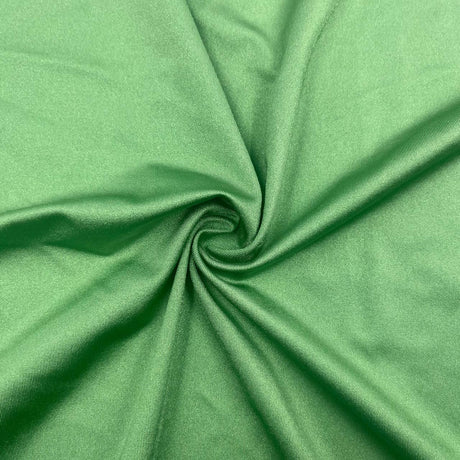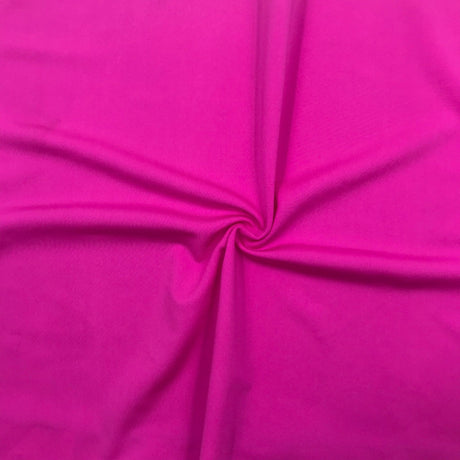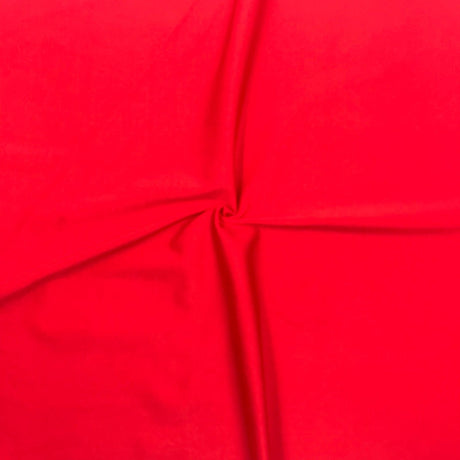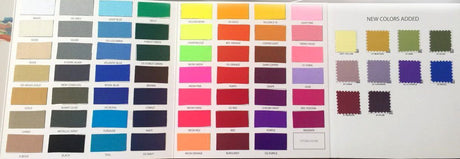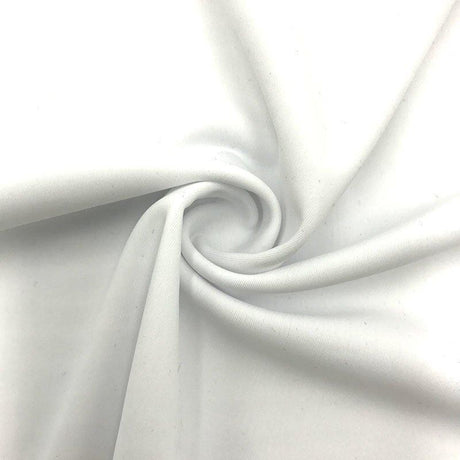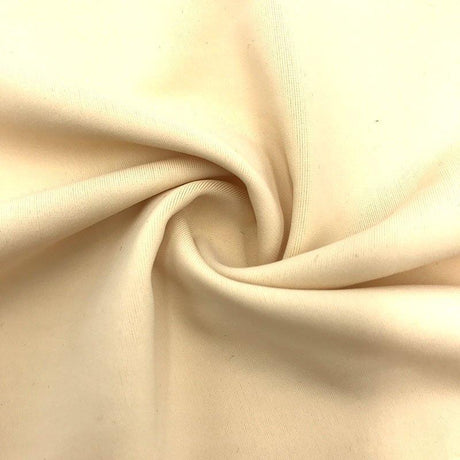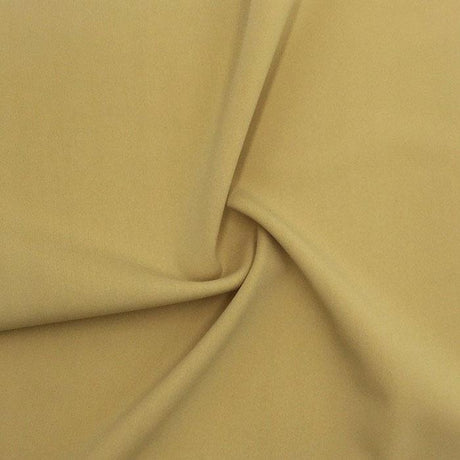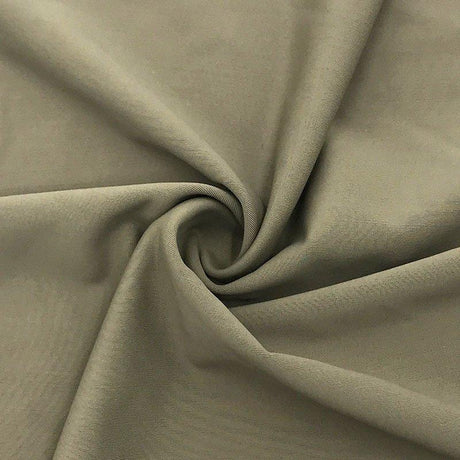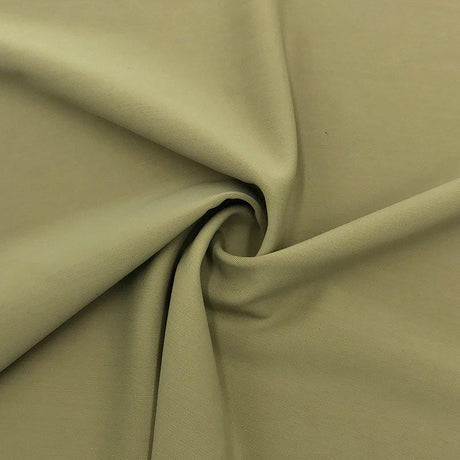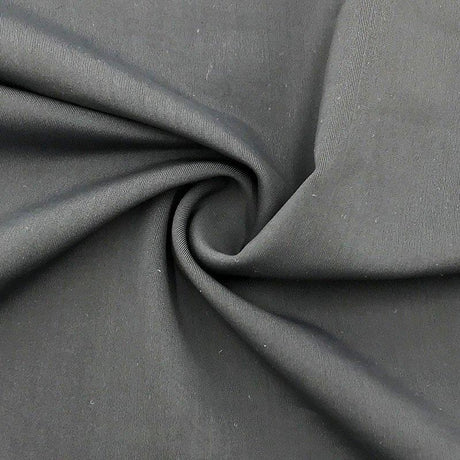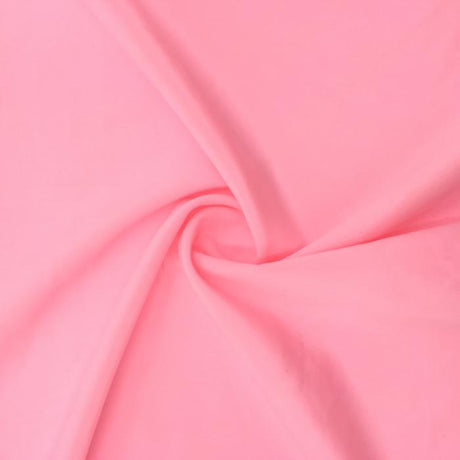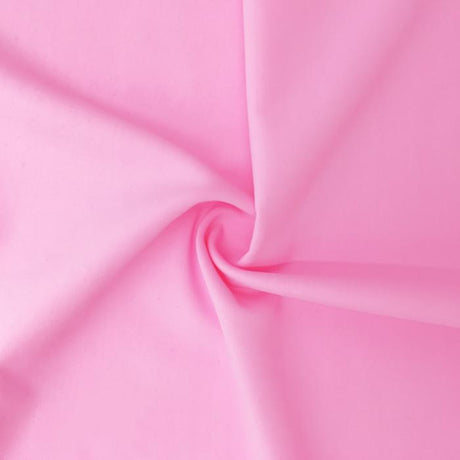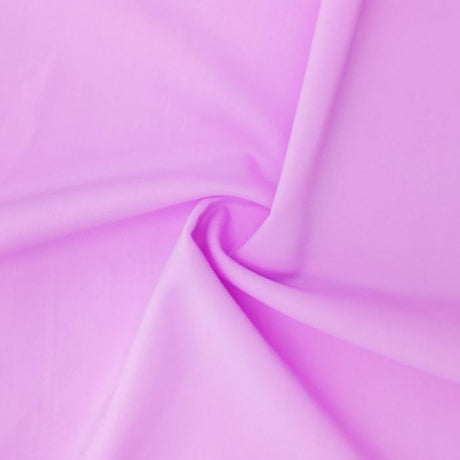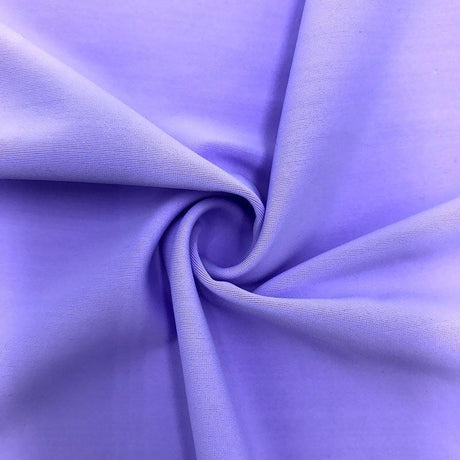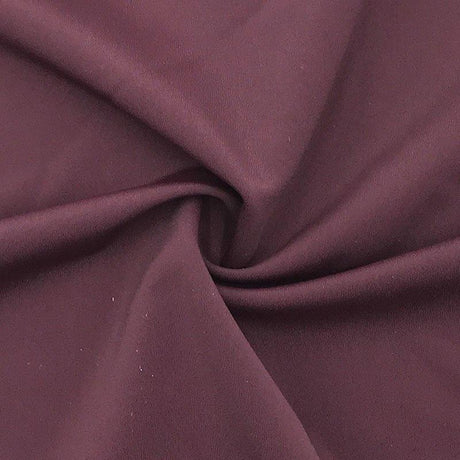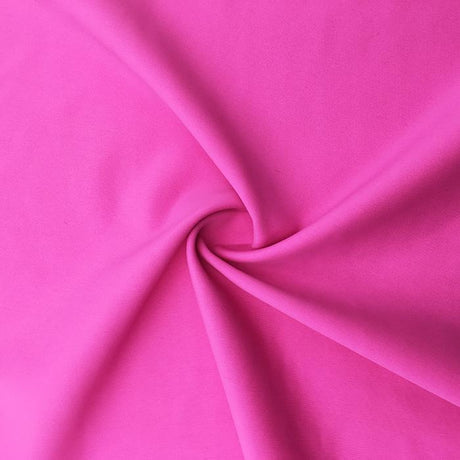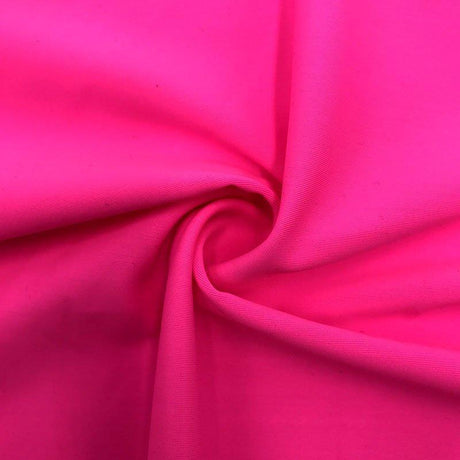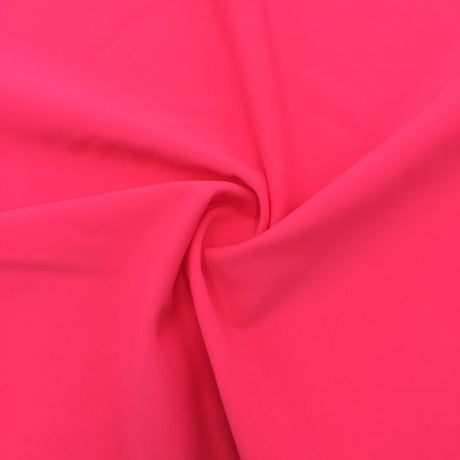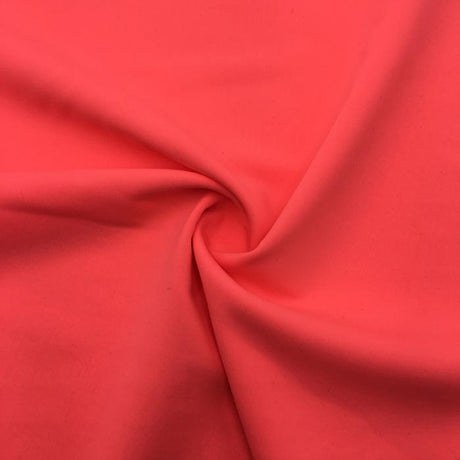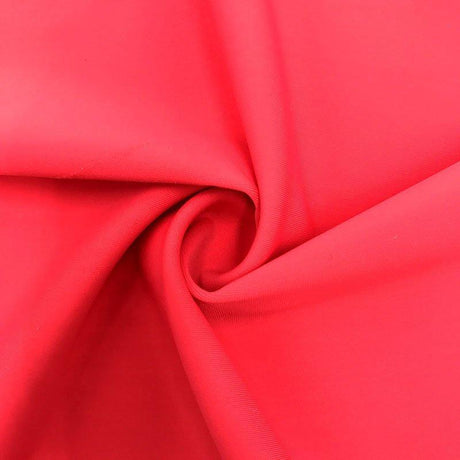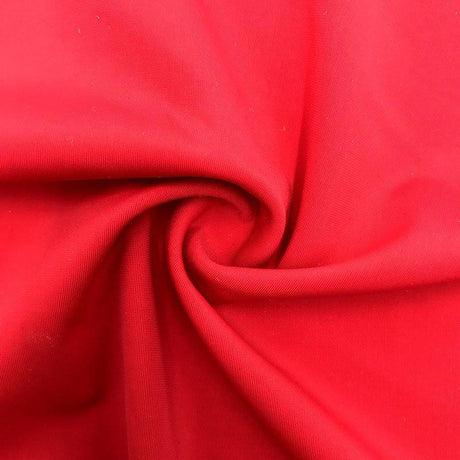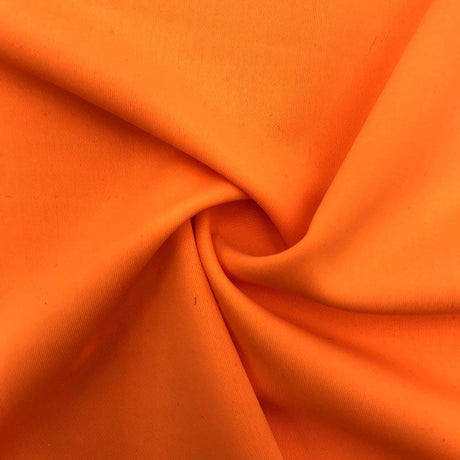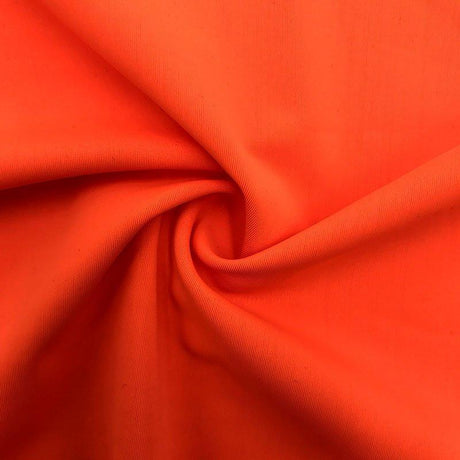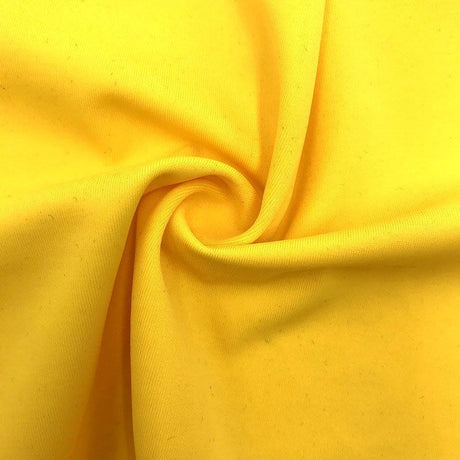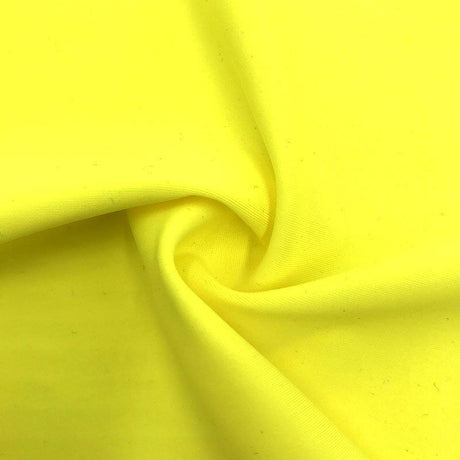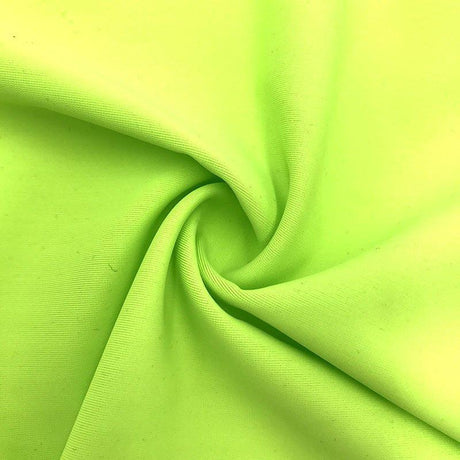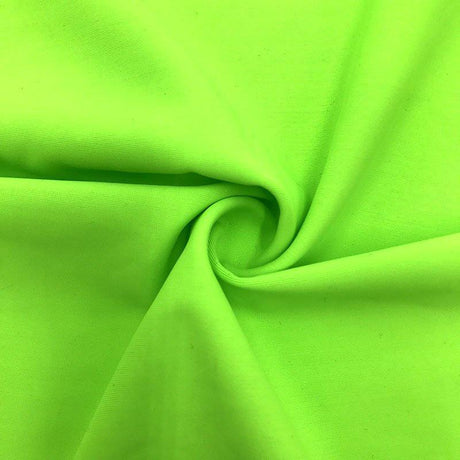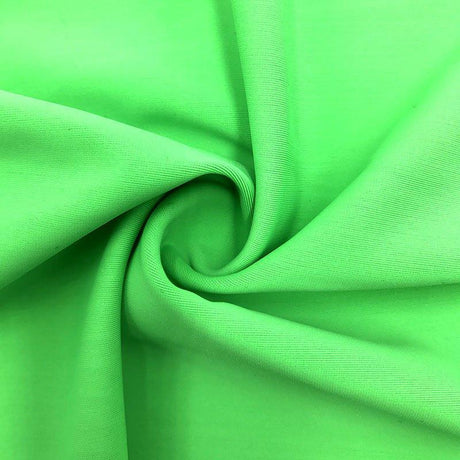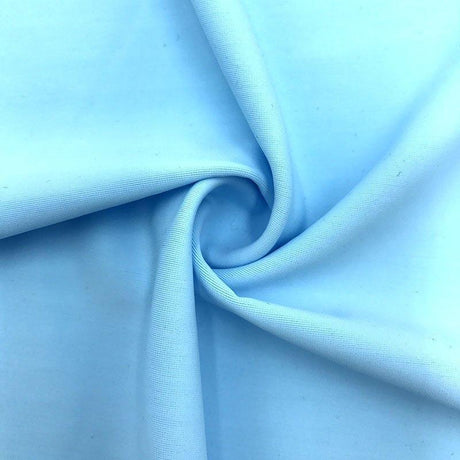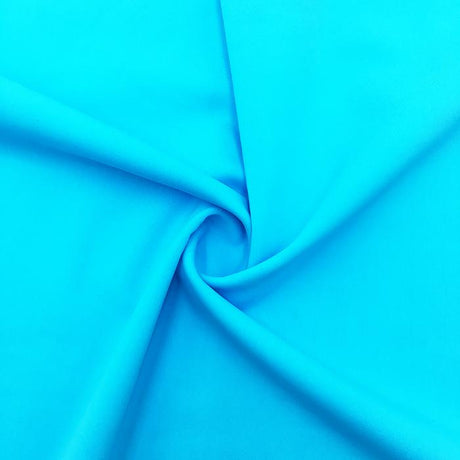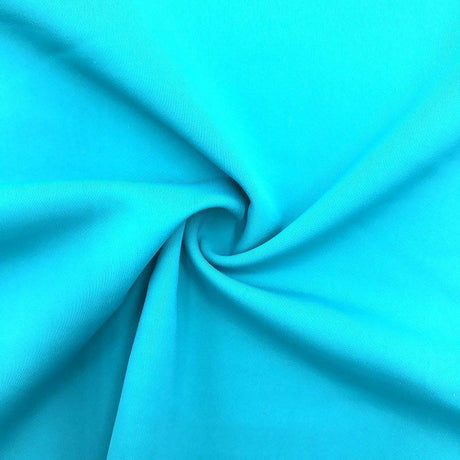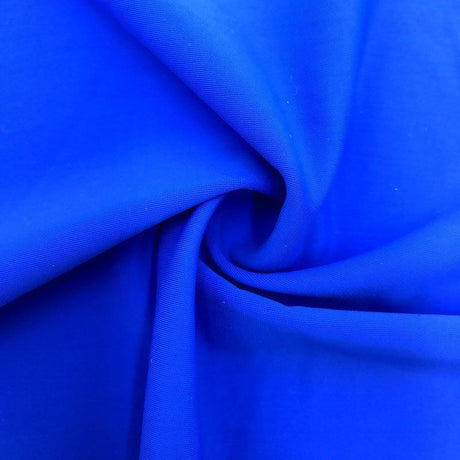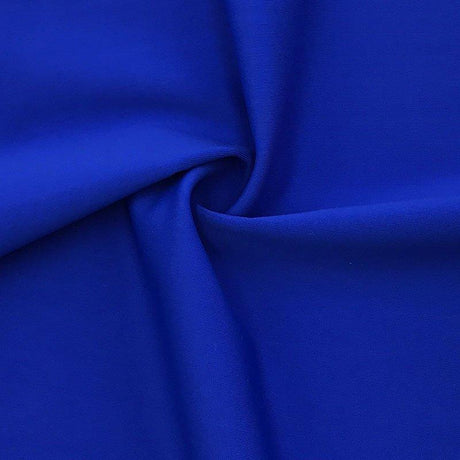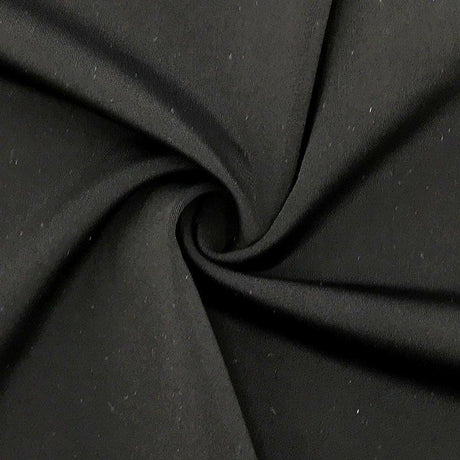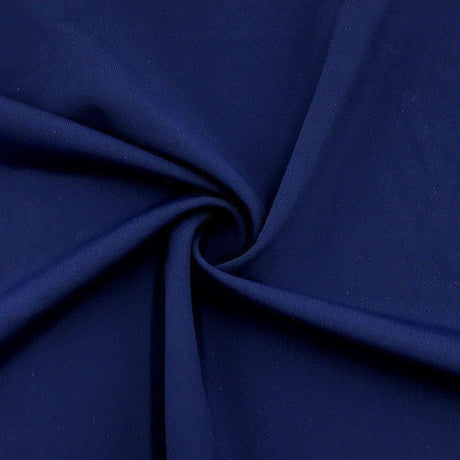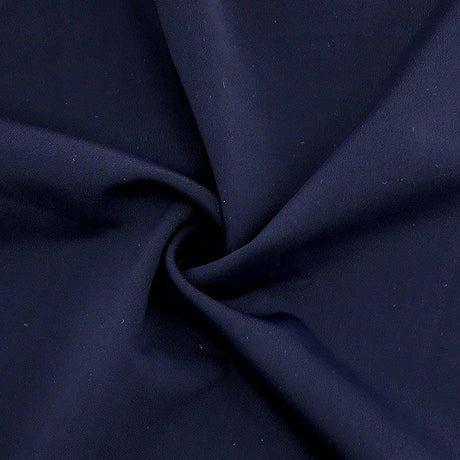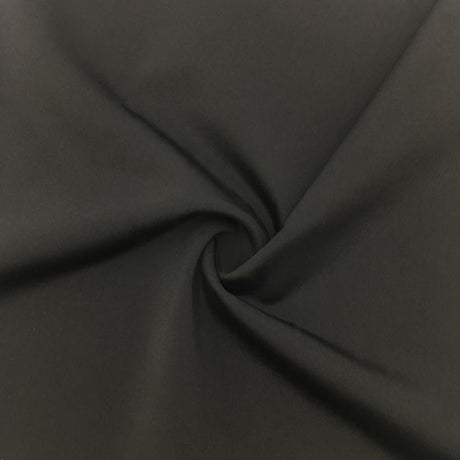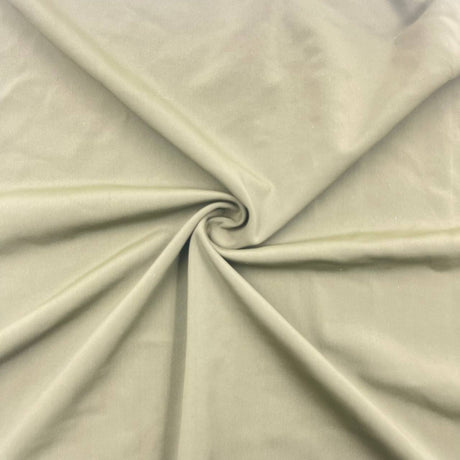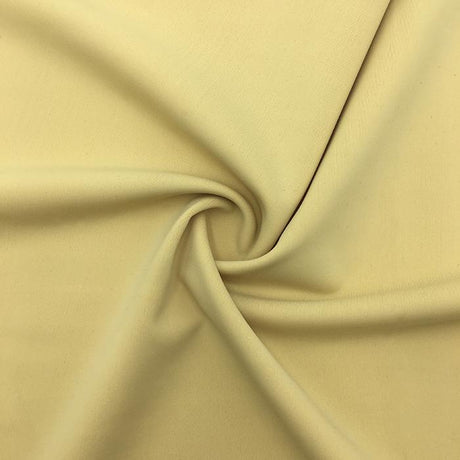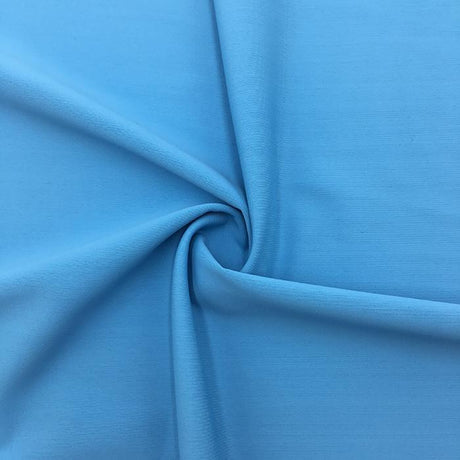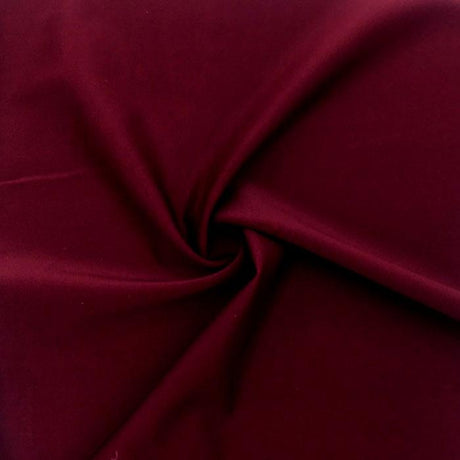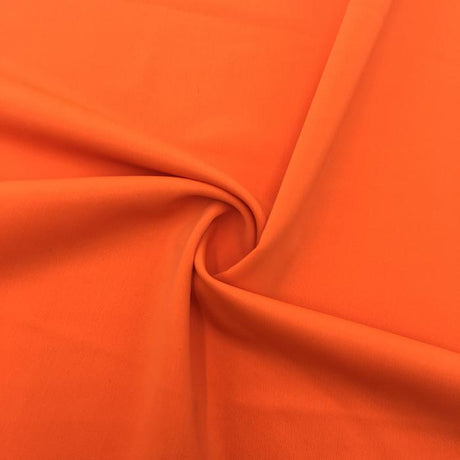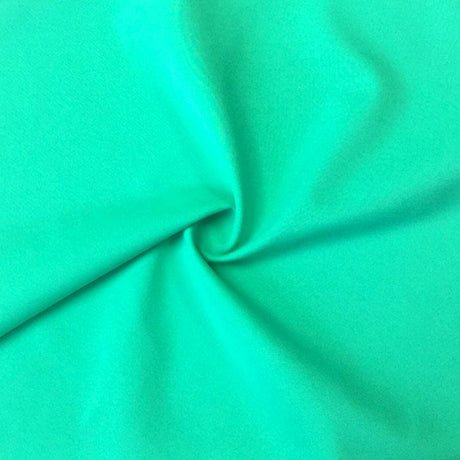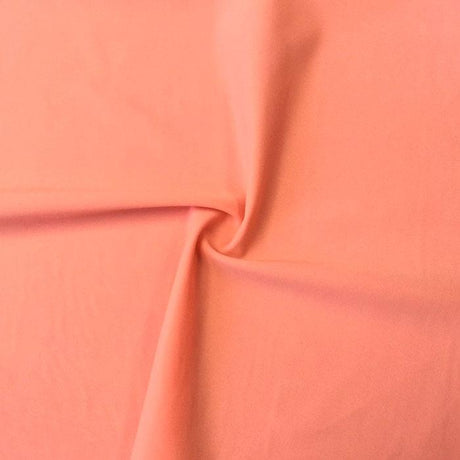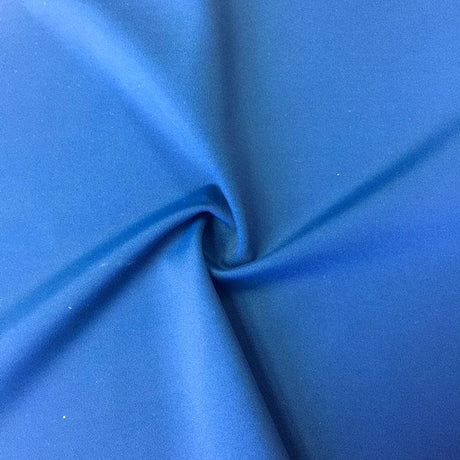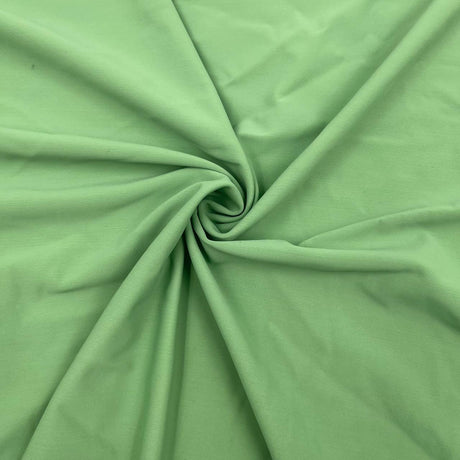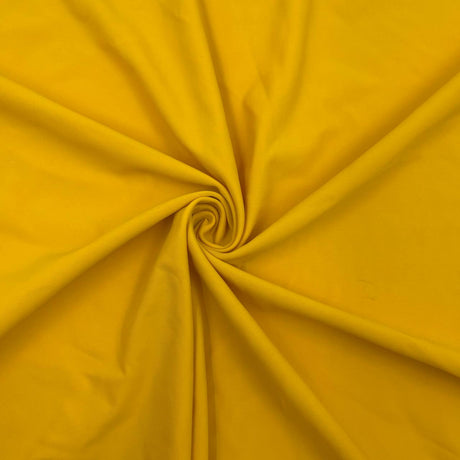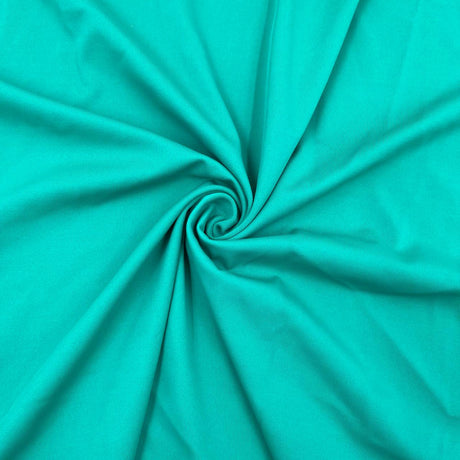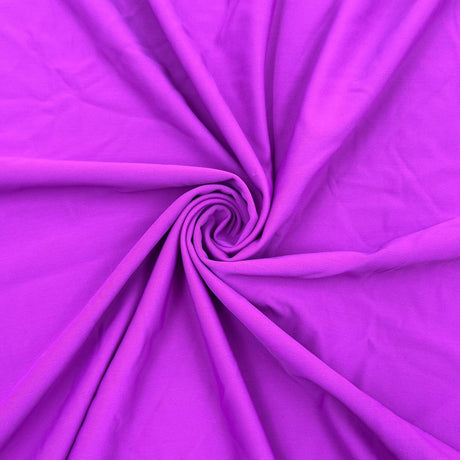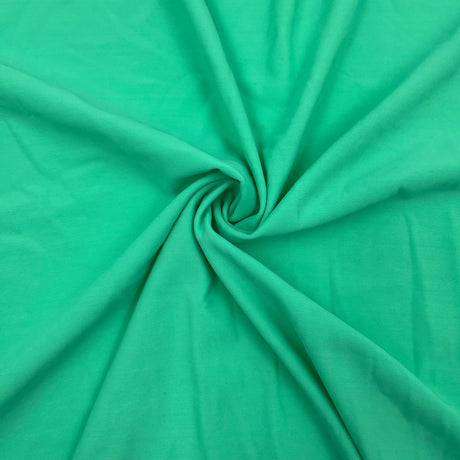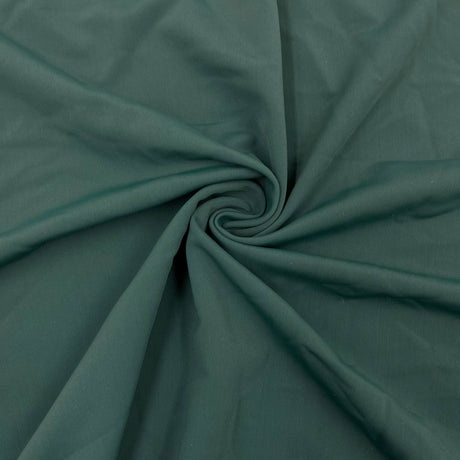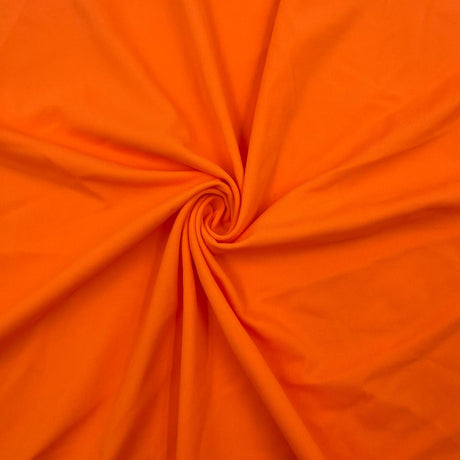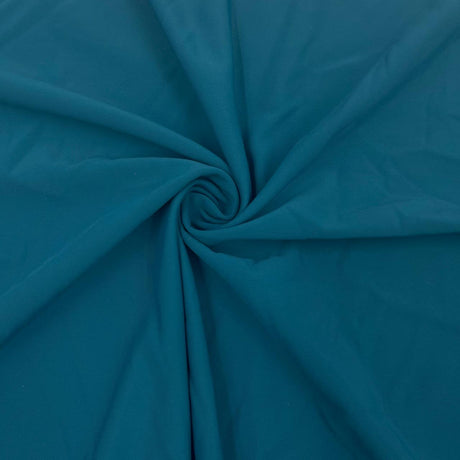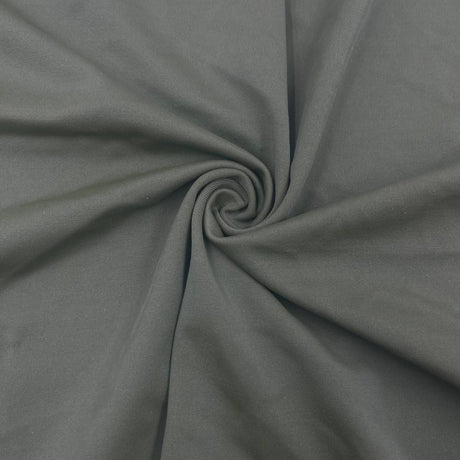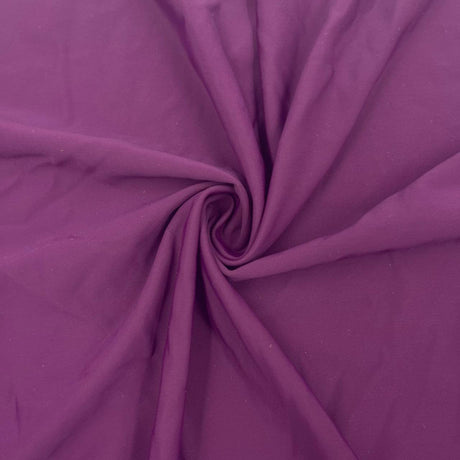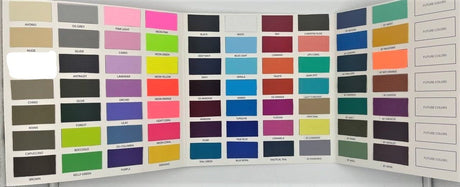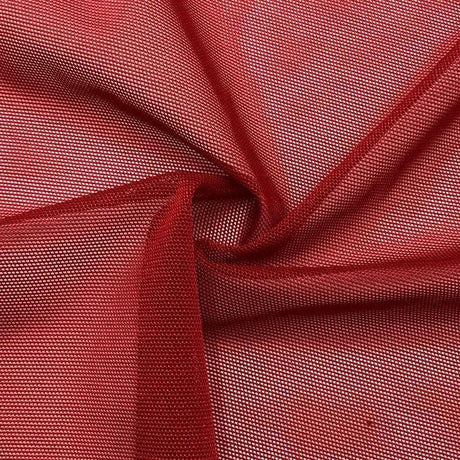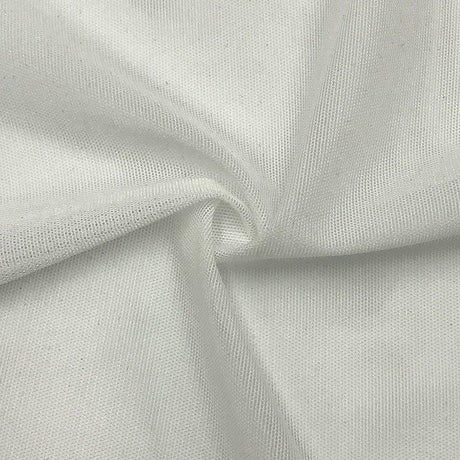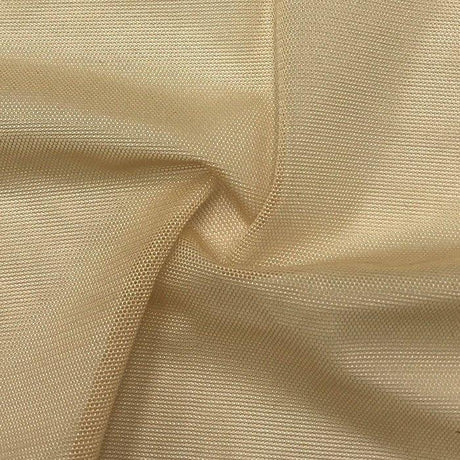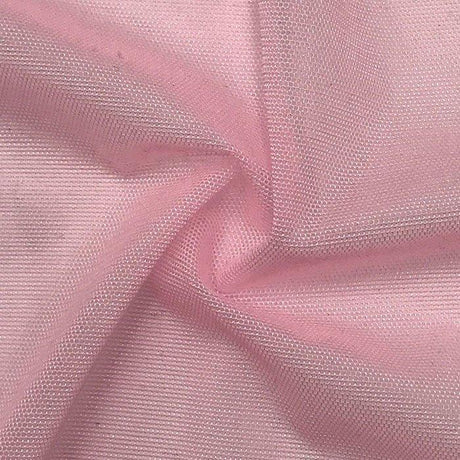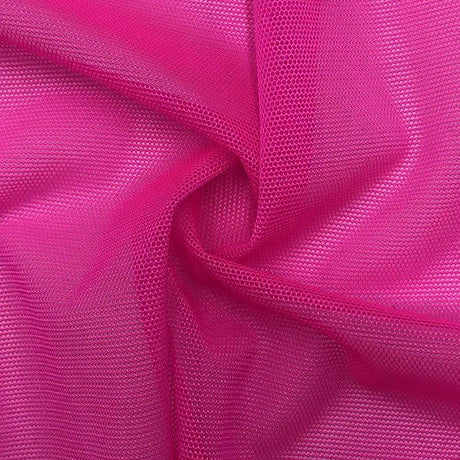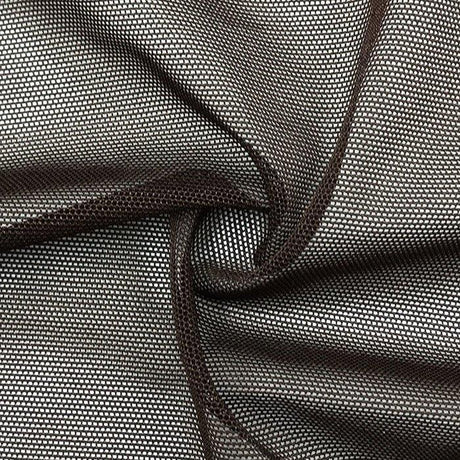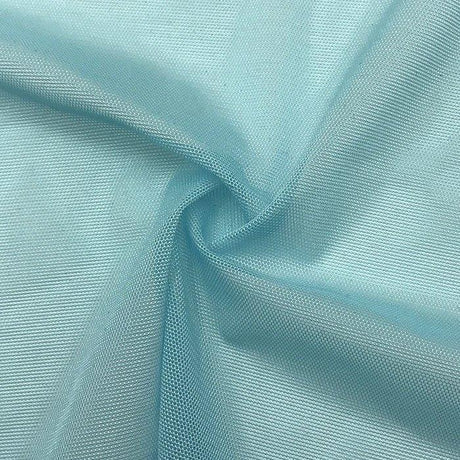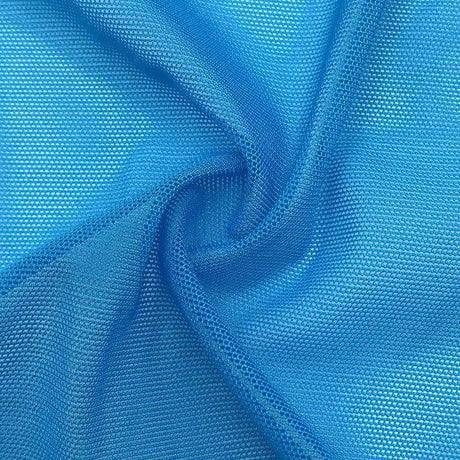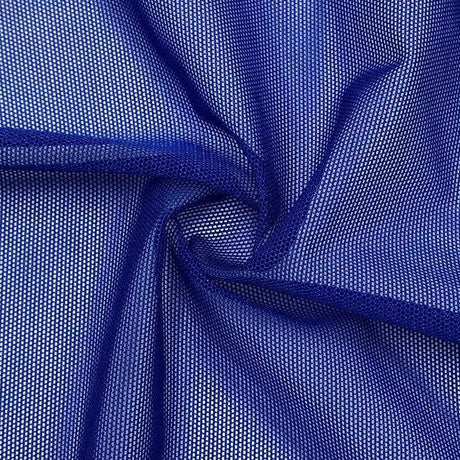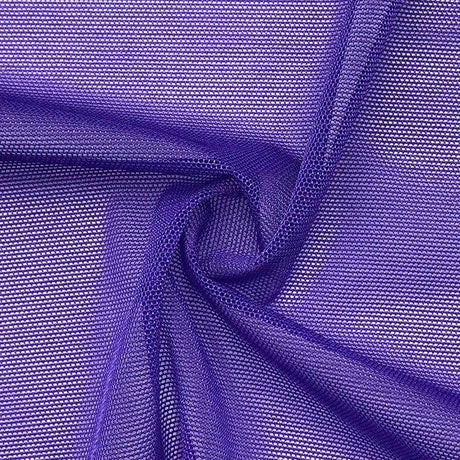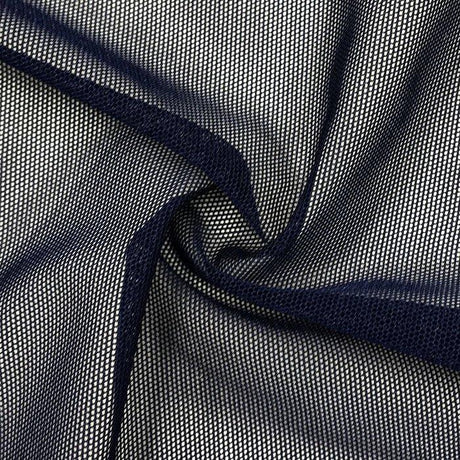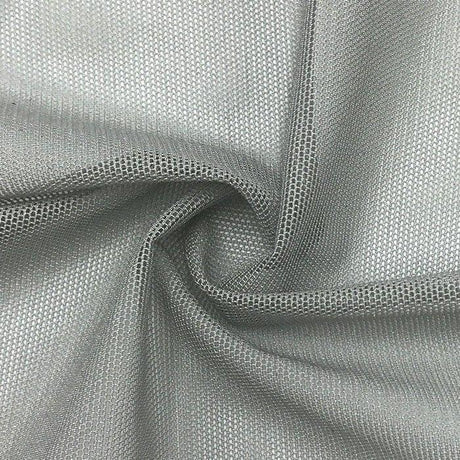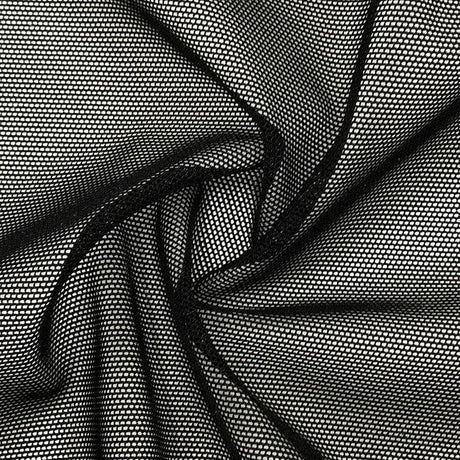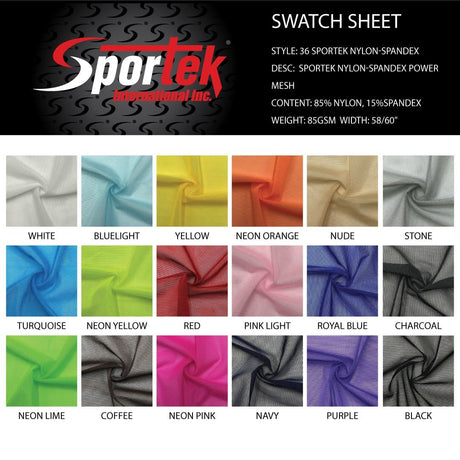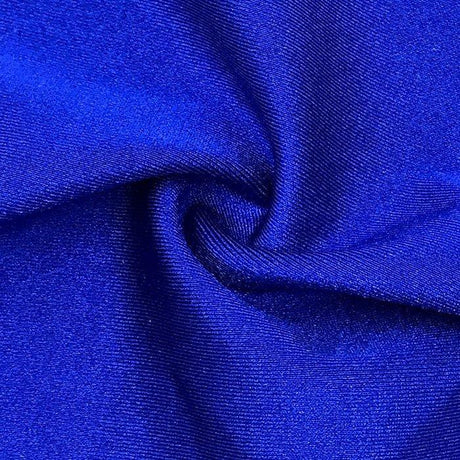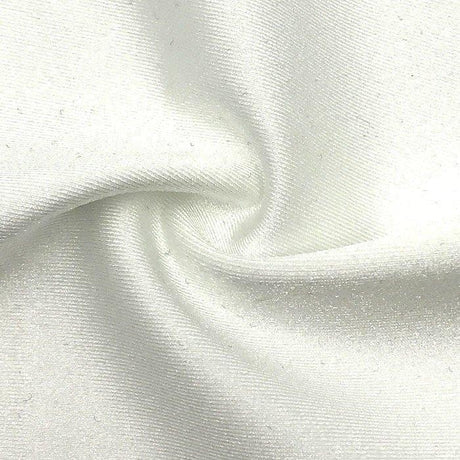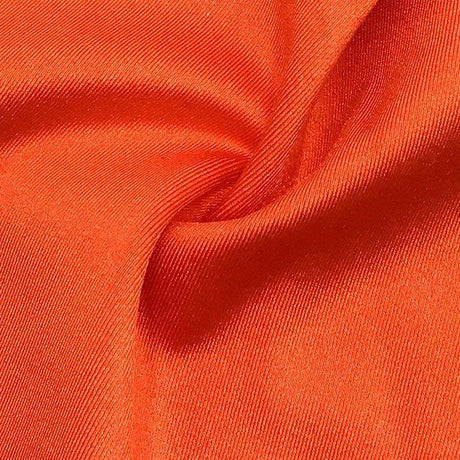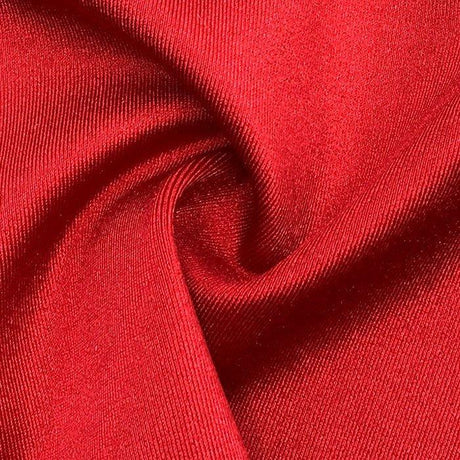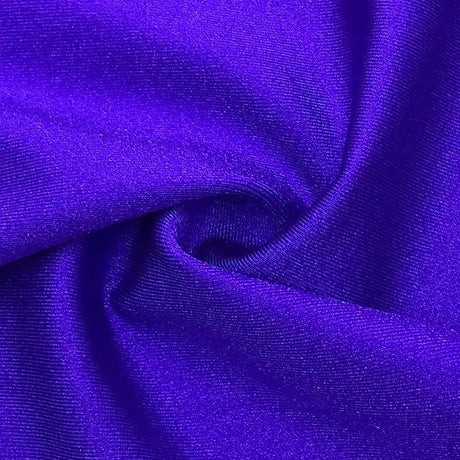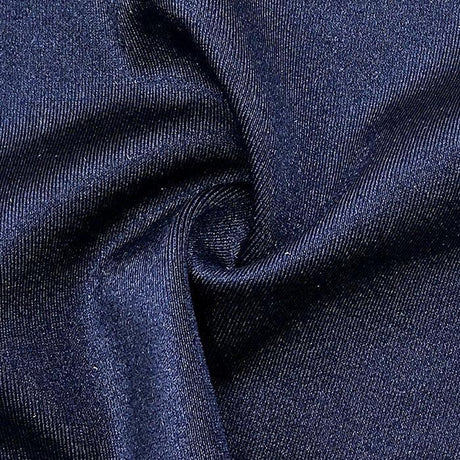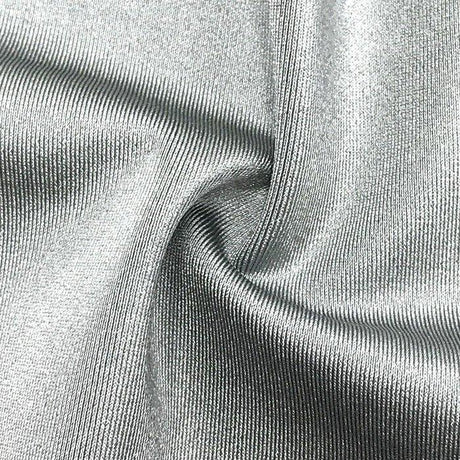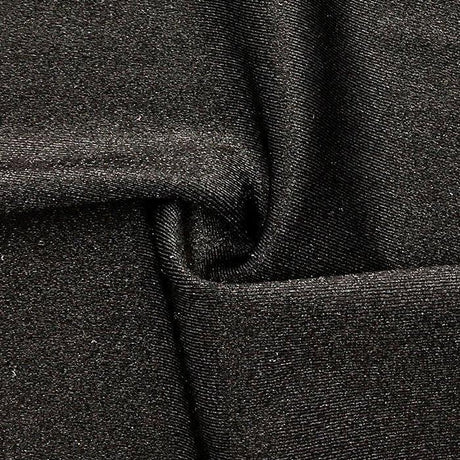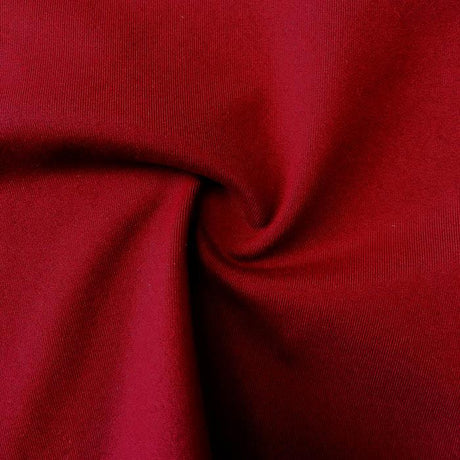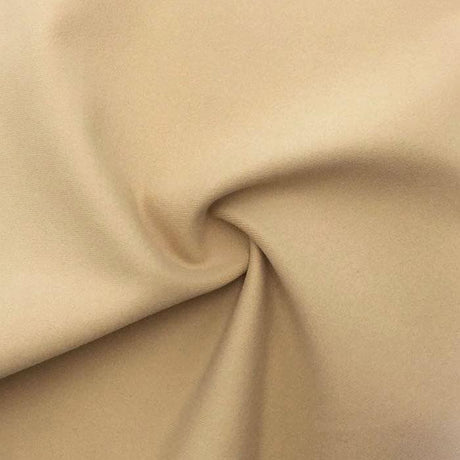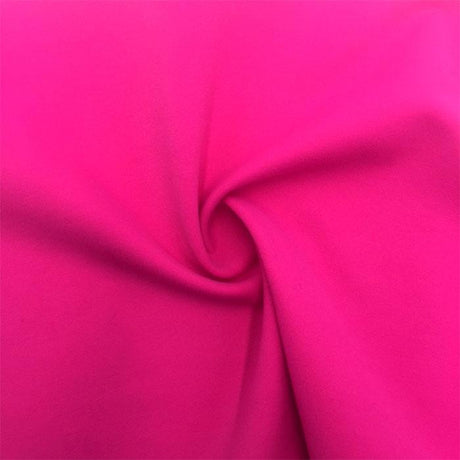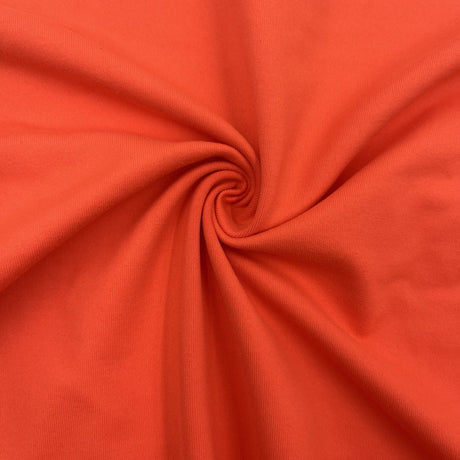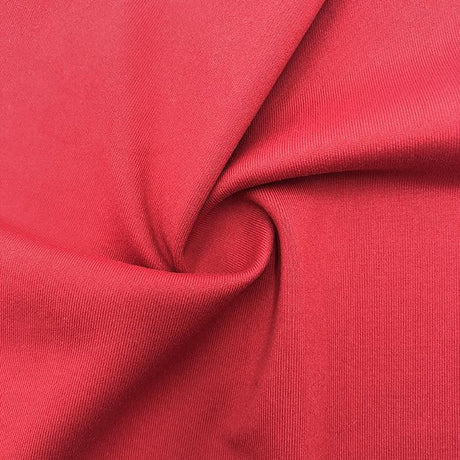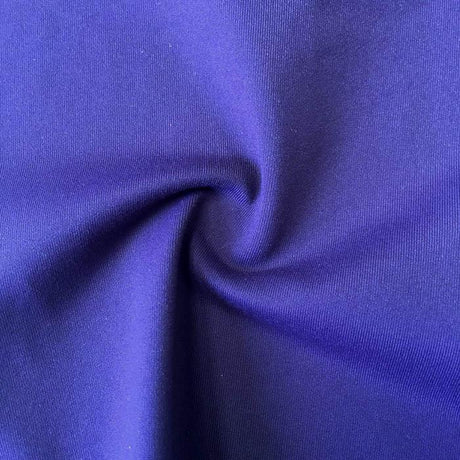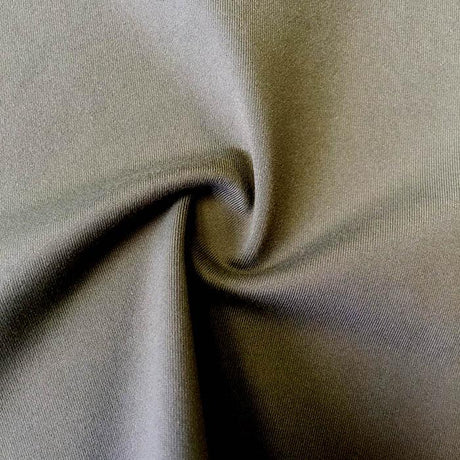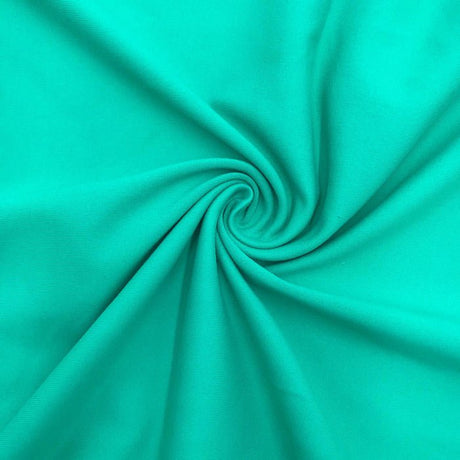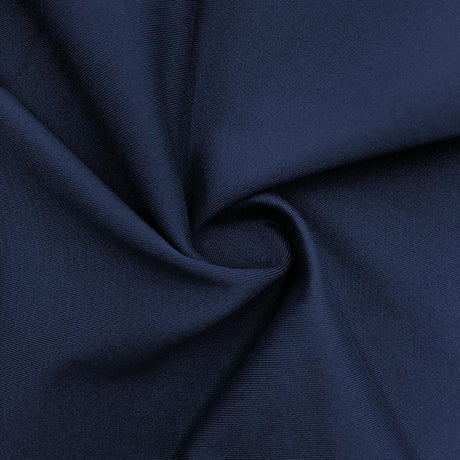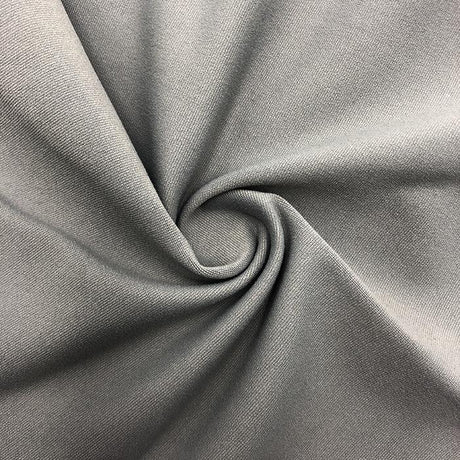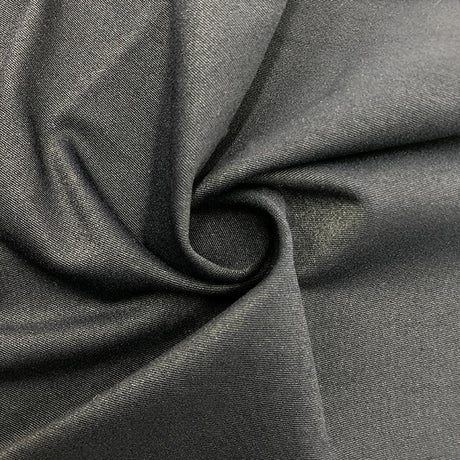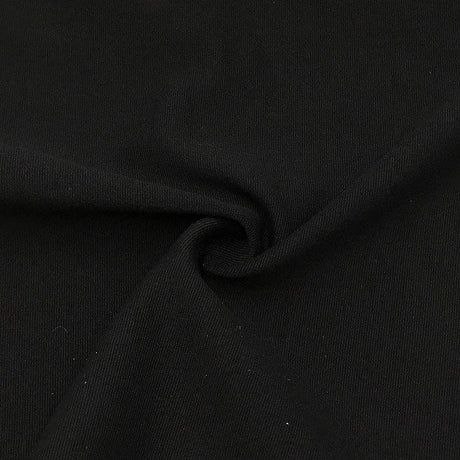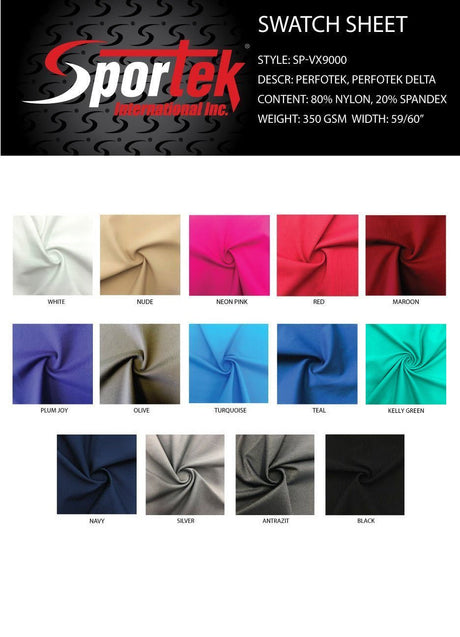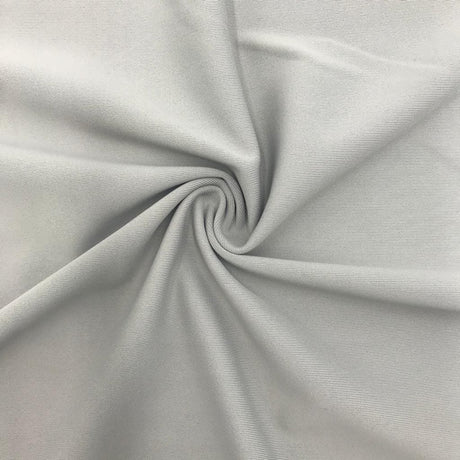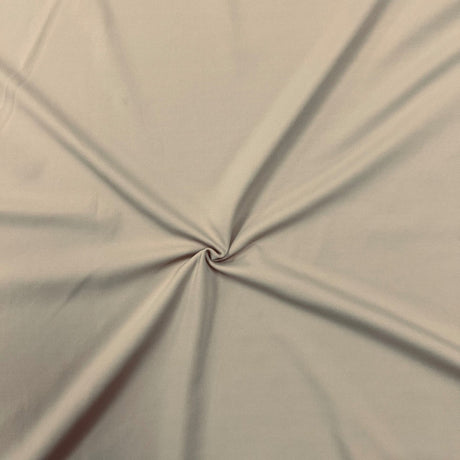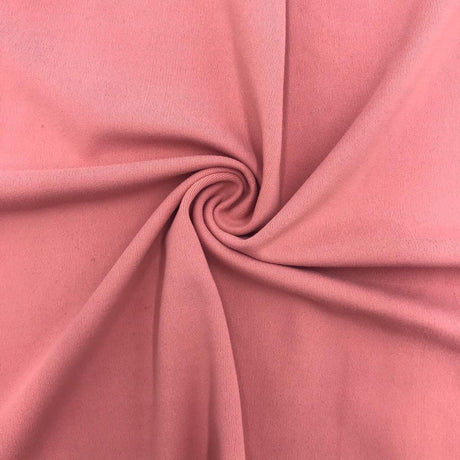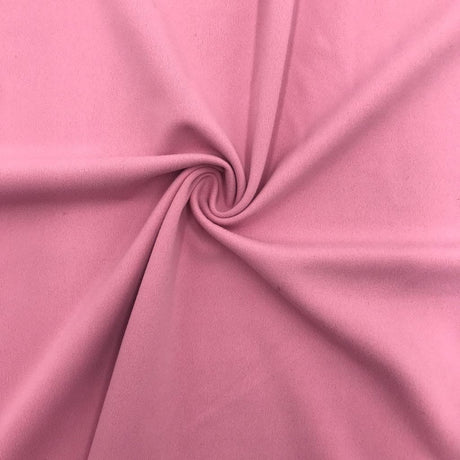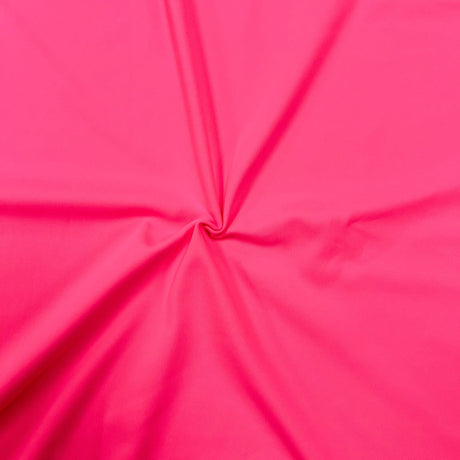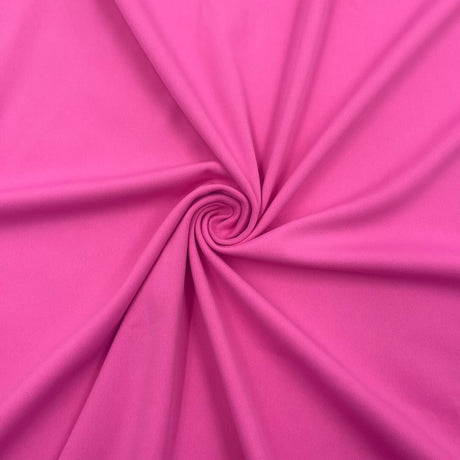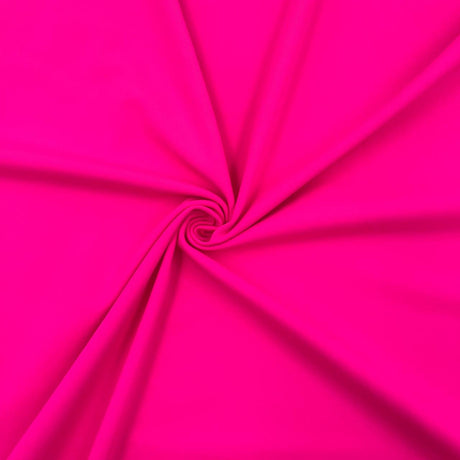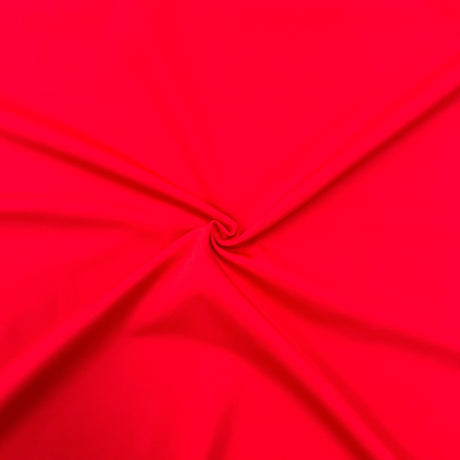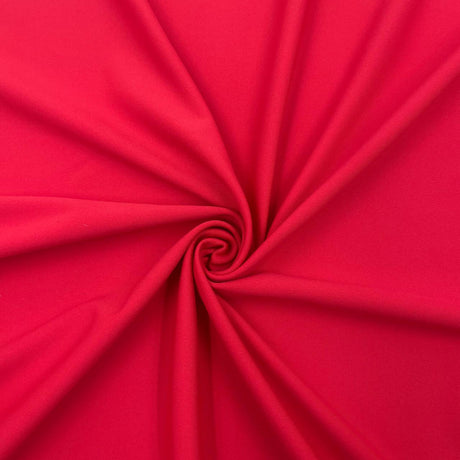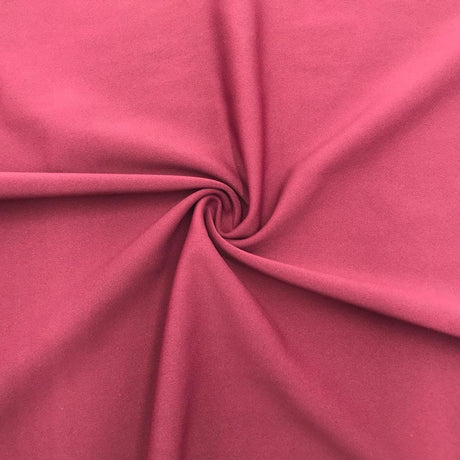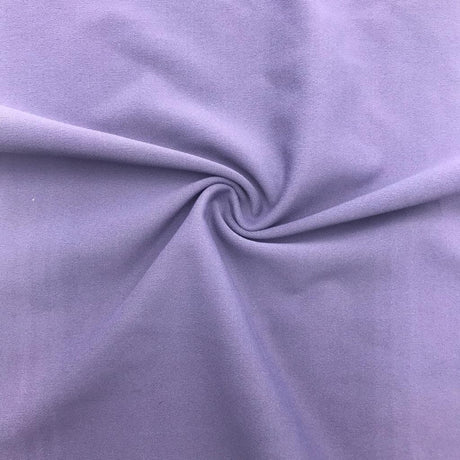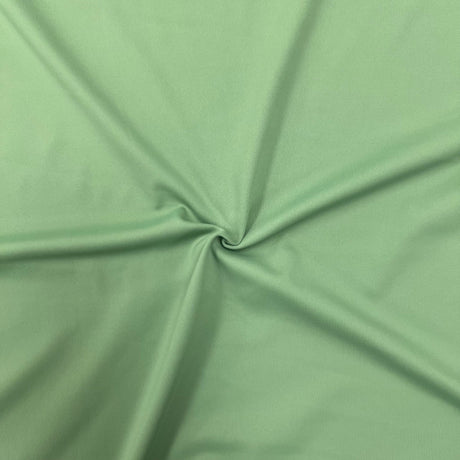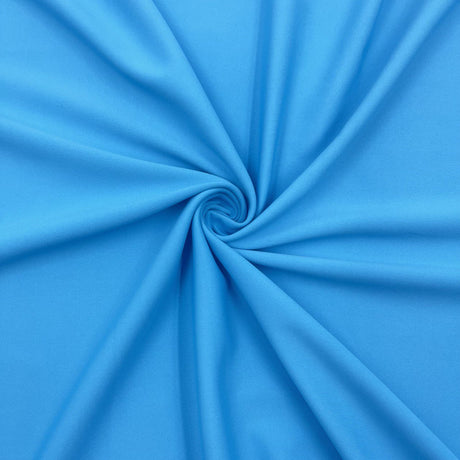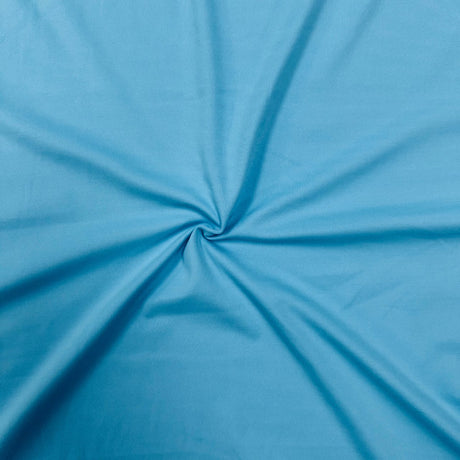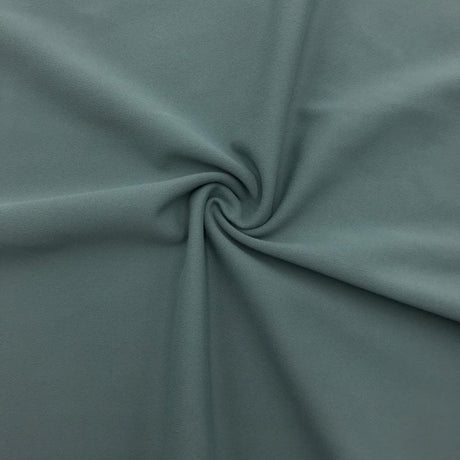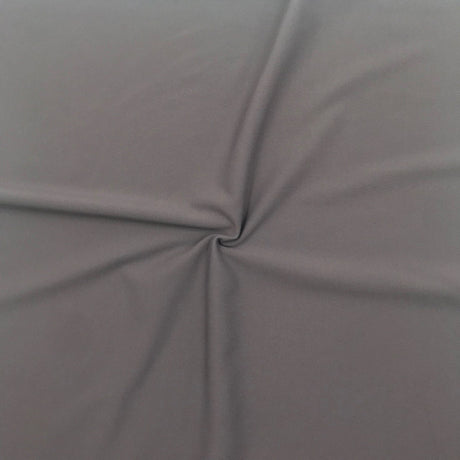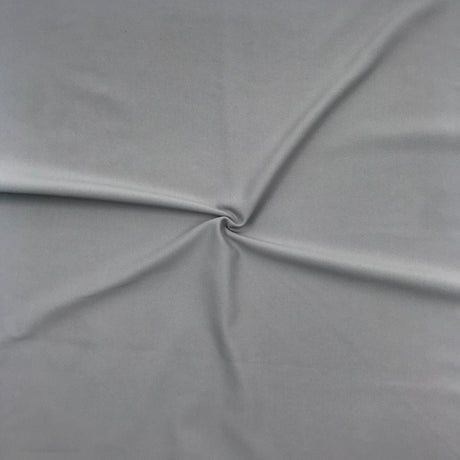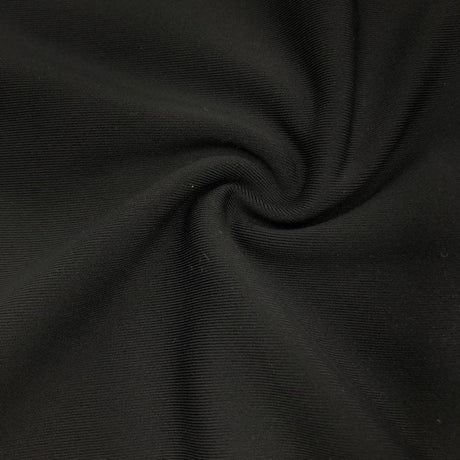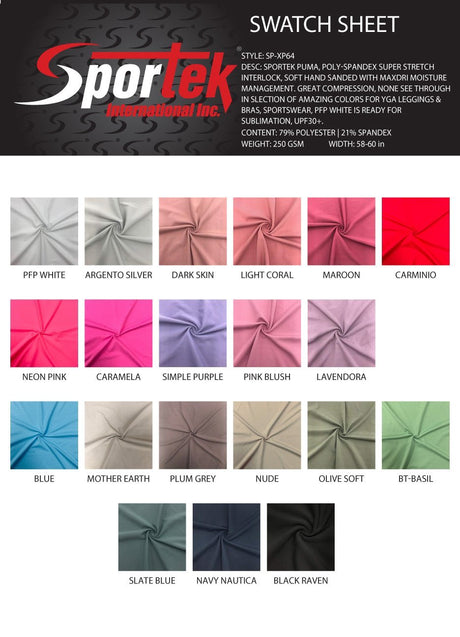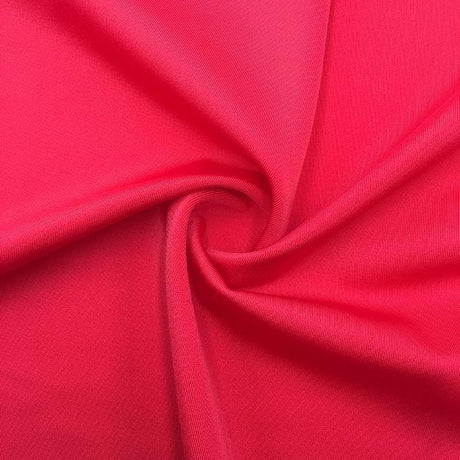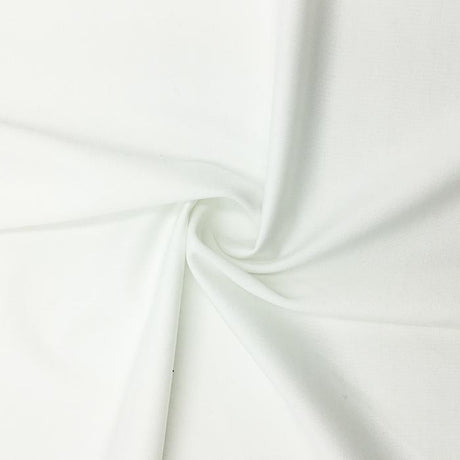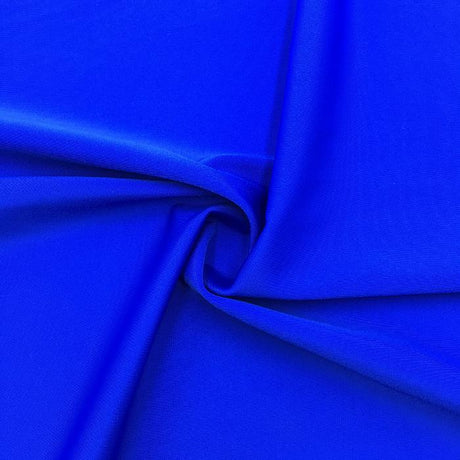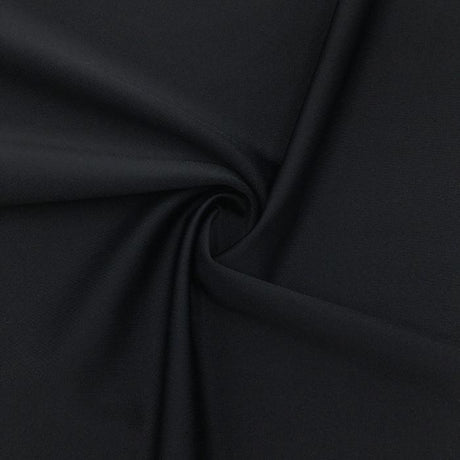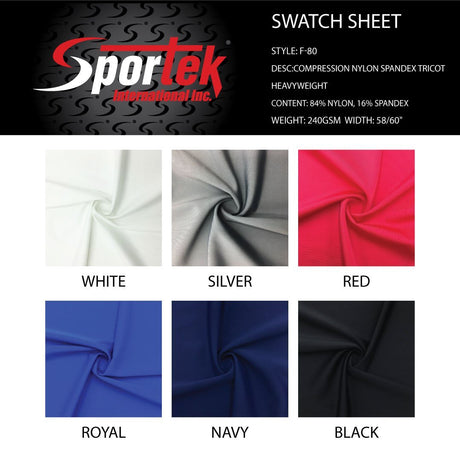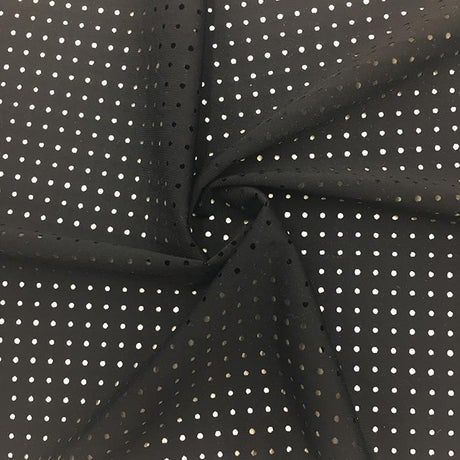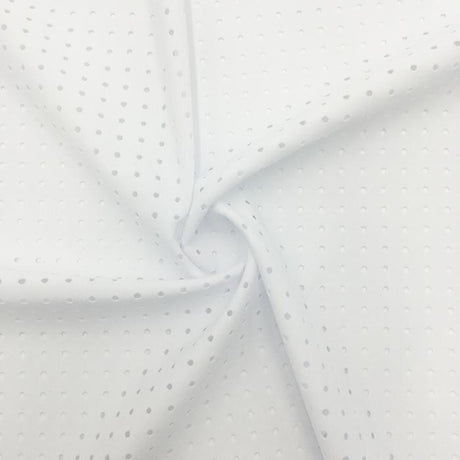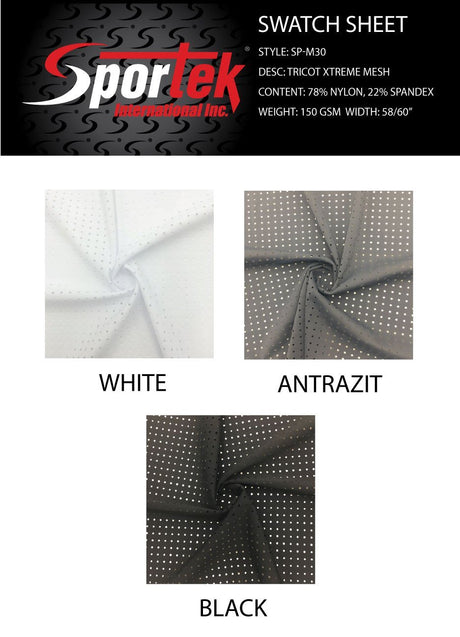Mesh fabrics have become essential in modern sportswear for their unique combination of breathability, stretch, moisture management, and style. Unlike solid fabrics, mesh incorporates thousands of tiny openings that allow air circulation, helping athletes stay cool and dry during intense workouts.
At the same time, the inclusion of spandex (elastane) fibers gives these fabrics 4-way stretch, enabling unrestricted movement and a snug fit that moves with the body. Designers often use mesh spandex panels in active garments not only for functional ventilation but also as eye-catching style elements – for example, sheer mesh inserts in leggings or jerseys add visual interest while serving a purpose. In short, mesh spandex fabrics manage to keep sportswear light, breathable, and flexible without sacrificing durability or support.
Why is mesh so important? In performance apparel, reducing weight and enhancing airflow can greatly improve comfort. Most athletic mesh fabrics weigh only about 80–130 GSM (grams per square meter), roughly half the weight of a typical cotton T-shirt. This lighter weight means less bulk and faster drying times, which is crucial when layering garments or sweating profusely.
Additionally, the porous structure of mesh allows sweat vapor to escape easily, aiding in moisture management. The synthetic fibers used (polyester or nylon) wick moisture away and dry quickly, preventing the fabric from feeling clammy. By strategically incorporating mesh spandex in high-heat zones (like the back, underarms, or behind the knees), sportswear designers create garments that keep athletes cooler and drier. The stretch and recovery of spandex also ensure that even as the mesh opens up with movement, it snaps back to maintain support and shape.
In the sections below, we’ll dive into what exactly mesh spandex is, explore different types and weights of mesh fabrics, and give technical guidance on choosing the right mesh for specific sportswear applications. Whether you’re designing compression leggings or a breezy workout tank, understanding the nuances of mesh spandex will help you pick a material that meets your performance needs and creative vision.
What is Mesh Spandex?
Mesh spandex refers to any knit fabric with an open-hole structure that also contains spandex (elastane) fibers for stretch. Technically, mesh is characterized by visible small holes or gaps in the knit, created by a specialized knitting technique (often a warp knit or a weft knit with mesh stitches) that produces an open grid or honeycomb pattern.
These holes – sometimes called “mesh seeds” – are the defining feature of mesh fabric, making it breathable and lightweight. When we talk about mesh spandex, we mean mesh fabric that is engineered with a blend of spandex to provide significant stretch (usually 4-way stretch).
Most mesh spandex fabrics are blends of a primary synthetic fiber with a smaller percentage of elastane. A common composition is polyester + spandex or nylon + spandex. For example, a typical athletic mesh might be around 90% polyester and 10% spandex, whereas a lightweight power mesh could be 95% polyester and 5% spandex.
Nylon-spandex meshes are also popular, often in ratios like 80/20 or 76/24 for stronger compression meshes. The choice of polyester vs. nylon impacts the fabric’s feel and performance: polyester mesh tends to be a bit stiffer but excels in moisture wicking and quick drying, while nylon mesh is usually softer to the touch but can absorb a bit more moisture (nylon absorbs ~4–6% of its weight in water vs. polyester’s ~0.4%).
In either case, the added spandex gives the mesh excellent elasticity. Mesh spandex fabrics are almost always 4-way stretch, meaning they can extend and recover in both the width and length directions, an important property for form-fitting activewear.
Construction-wise, mesh spandex is often knit on tricot or Raschel warp knit machines for stability, or on circular knit machines for maximum 4-way stretch. The knitting pattern can create different hole shapes and sizes – from tiny pinhole mesh to larger athletic mesh holes. Some meshes are warp-knit with spandex, giving controlled stretch (more stretch in one direction than the other), which can be useful for stability in, say, a compression band.
Others are weft-knit (circular), yielding uniform stretch in all directions. Regardless of the knit method, the open-hole structure combined with elastane is what makes mesh spandex special: you get the best of both worlds – ventilation through the holes, and stretch + recovery from the spandex. It’s a versatile fabric used in everything from football jerseys to yoga pants.
Mesh spandex fabrics are also known for being lightweight but strong. The synthetic fibers (poly/nylon) give high tensile strength and abrasion resistance, while the net-like structure distributes stress across many interlinked yarns. Interestingly, the open structure can even enhance durability in some cases, as there are no large continuous areas of fabric to tear – any stress is dissipated at the many knit junctions. Of course, the holes mean mesh isn’t appropriate for every situation (it won’t block wind or water, for example, and it’s not meant for high insulation), but in sportswear, those “weaknesses” are actually strengths, as they correlate to breathability and lightness.
To summarize, mesh spandex is a stretchy, breathable fabric constructed with an open knit. It’s typically a blend of man-made fibers (often polyester) with elastane, resulting in a smooth, hair-free texture that resists wrinkles and holds its shape and color well. This combination makes it ideal for athletic apparel, where you want a fabric that moves with you, keeps you cool, and stands up to the rigors of training.
Key Performance Characteristics of Mesh Spandex
Mesh spandex fabrics offer a range of performance properties that are crucial in athletic wear. Here are the key characteristics to consider:
• Breathability and Airflow: The most obvious advantage of mesh is its breathability. The open holes allow air to pass through easily, which helps vent heat and circulate air around the body. A typical athletic mesh may have an open area percentage (OAP) of about 15–25%, meaning that a significant portion of the surface is open space for air.
This translates to tangible cooling: in tests, mesh fabrics dry significantly faster than equivalent solid fabrics – one experiment showed a mesh drying in 22 minutes versus 58 minutes for a solid polyester fabric (62% faster). For athletes, this can mean less overheating and quicker evaporation of sweat. Breathability isn’t solely about hole size; it’s also affected by knit density and fiber type. But generally, mesh spandex excels at keeping you cool and dry by virtue of its ventilating structure.
• 4-Way Stretch and Recovery: Thanks to the spandex content, mesh spandex fabrics usually stretch in all directions and snap back to their original shape. The 4-way stretch ensures that a garment can accommodate dynamic movements – whether you’re sprinting, stretching, or lifting, the fabric moves with you and then recovers.
The knit structure itself provides some give, but it’s the elastane fibers that guarantee true elastic recovery. High-quality mesh spandex has excellent recovery, meaning it won’t stay saggy or bagged-out after being stretched. For example, a heavy power mesh with 16–24% spandex will offer firm stretch and bounce-back even after long wear.
This is critical for compression garments (like compression leggings or sports bra linings) where you need the fabric to consistently exert pressure and maintain fit. Even lighter meshes with 5–10% spandex will contribute gentle stretch and help the mesh not tear when it’s pulled. In short, the stretch and recovery of mesh spandex contribute to both comfort and durability of sportswear.
• Compression vs. Flexibility: The ratio of spandex and the weight of the mesh determine where it falls on the compression spectrum. Some mesh spandex fabrics are designed for high compression support – often called power mesh or powernet.
These have a higher elastane content and tighter knit. For instance, a power mesh might be 76% nylon, 24% spandex at 145 GSM, offering strong stretch resistance and support. Such a fabric will feel firmer and is great for areas that need muscle compression or stability (think waistbands, abdomen panels, or bra backs). On the other end, meshes with lower spandex (5–10%) and looser knit are extremely flexible and drapey, used more for flexibility and ventilation than for support.
Designers must choose appropriately: a heavy-duty mesh can provide mild compression and structure, whereas a light stretch mesh is meant for breathability and range of motion. Both types have 4-way stretch, but the feel is different – one “hugs” the body (higher power), and the other “gives” with the body (higher flexibility). Many athletic garments actually combine them (e.g., a sports bra might use a stiff power mesh lining for support and a lighter mesh overlay for style/ventilation).
• Recovery and Shape Retention: Beyond just stretching, recovery is about how well the fabric returns to shape. Mesh spandex is prized for its ability to maintain its shape wear after wear. The inclusion of quality spandex fibers means that after stretching, the fabric rebounds without permanent deformation. Even under strain, a good mesh won’t develop permanent stretch-out or sagging at the elbows or knees.
This property is especially important in tight-fitting activewear, which is subjected to repeated movements. Recovery also ties into wrinkle resistance – mesh spandex doesn’t wrinkle easily (polyester/nylon are resilient fibers), and any creases tend to fall out once the garment is worn or lightly steamed.
This makes mesh panels great even in lifestyle “athleisure” pieces, since the garment will look neat and keep its intended silhouette. High elastane content and proper knit tension ensure that mesh spandex fabrics have excellent springiness and memory – a key reason they’re used in high-performance and compression apparel.
• Abrasion Resistance and Durability: Despite looking delicate, mesh fabrics made from nylon or polyester are quite durable. The fibers themselves are strong and abrasion-resistant (polyester in particular resists friction well, making it suitable for items like running shorts that may rub). The knit structure of mesh also prevents runs from propagating easily – a small snag will be localized rather than tearing a large hole, because the tear has to move around the knit nodes. That said, mesh edges and seams can be vulnerable if not properly constructed.
The cut edges of mesh may fray or curl, and seams in high-stress areas could tear if the stitching doesn’t allow stretch. Therefore, reinforcing seams (with binding or using stretch stitches) is important when sewing mesh (more on that later). In general, a well-made mesh spandex fabric can handle the demands of sports: many cycling jerseys and football uniforms use mesh that endures mud, slides, and frequent washing.
For instance, some high-end meshes even incorporate special coatings like polyurethane or use double-knit spacer structures for extra toughness (e.g., 3D spacer mesh for padding). Unless you’re dragging it over rough surfaces constantly, mesh spandex holds up impressively well in athletic use. Just remember that proper care (gentle wash, avoiding high heat) will prolong its life, as high heat can degrade spandex over time.
By understanding these performance characteristics, you can select the right type of mesh spandex for your project – whether you need maximum breathability, strong compression, or a balanced combination of properties. Next, we will compare specific types of mesh fabrics and how their technical specs (like GSM and composition) align with different uses.
Mesh Types and Weights
Not all mesh fabrics are identical. Mesh spandex comes in various types and weights, each suited to different purposes in sportswear. Let’s examine some common categories: lightweight power mesh, athletic mesh, hex mesh, and heavy-duty supportive mesh. We’ll compare their typical weight (GSM), composition, opacity, and ideal uses.

Various mesh spandex fabrics in different weights and knit patterns. Lighter meshes are sheer with fine holes, ideal for ventilation, while heavier meshes have thicker structure or smaller openings for support.
• Lightweight Power Mesh: This is a sheer, 4-way stretch mesh often used as a lining or for semi-transparent panels. Lightweight power mesh typically weighs around 60–100 GSM. It’s usually made of polyester/spandex (or sometimes nylon/spandex) with a relatively low spandex content (5–15%). For example, SpandexByYard’s Soft Silk Power Mesh is 95% polyester, 5% spandex at 90 GSM – very light and breathable. At this weight, the mesh is quite opaque (transparent) due to the fine holes and thin yarns; a single layer will be see-through. However, it provides gentle stretch and a smooth feel.
Ideal uses: lining for sports bras or shorts (to add support without bulk), sheer inserts in leggings or jerseys for style, and layering in dance or gymnastics costumes. Because it’s so light, power mesh is often doubled up for a bit more support (e.g., two layers in a bra cup). It has some compression effect if stretched tightly, but mainly it’s about flexibility and airflow. Designers choose lightweight power mesh when they want to add coverage or color contrast without trapping heat. Note that lighter meshes can be a bit more delicate to sew (they may shift or stretch), but the result is a very soft, barely-there layer that enhances comfort.
• Athletic Mesh (Medium Weight): Athletic mesh refers to the mesh fabrics commonly used as the primary material in sports uniforms, training jerseys, basketball shorts, and the like. These are medium-weight meshes, roughly 100–130 GSM. They can be 100% polyester (with mechanical stretch from the knit) or a poly/spandex blend around 90/10 for true 4-way stretch. A typical example is a micro poly mesh at ~95 GSM used for football or soccer jerseys – small holes, lightweight but reasonably durable and not overly sheer. Another example: a bird’s-eye mesh (named for its small textured pattern) might be ~130 GSM with spandex for stretch.
Athletic mesh is usually semi-opaque: the holes are noticeable but because the fabric has a bit more substance, you won’t see completely through it at a distance. Ideal uses: full athletic tops, team jerseys, basketball or training shorts, and ventilated panels in running shirts. These meshes strike a balance between breathability and structure. They are light enough to keep you cool, but heavy enough to withstand contact and frequent washings. SpandexByYard carries poly micro meshes specifically for sportswear (e.g., 82 GSM for linings and 95 GSM for slightly more coverage). For a project like a loose basketball tank or a ventilated workout tee, athletic mesh is the go-to – it’s the classic “sports mesh” people think of, often with that small diamond or hexagonal hole pattern.
• Hex Mesh / Honeycomb Mesh: Hex mesh refers to mesh fabrics with a hexagonally shaped hole pattern (resembling a honeycomb). These can range from medium to heavy weight depending on construction. Some hex meshes are 3D structured or spacer fabrics, meaning they have a bit of thickness and stand away from the body to improve airflow.
For instance, a honeycomb 3D mesh with moisture management finish might weigh around 200 GSM – indicating a fairly substantial fabric with a pronounced hexagonal pattern for ventilation (often used in high-performance gear or even shoe uppers and backpack panels). On the other hand, there are lighter hex meshes (~100 GSM) which are more like standard fabric with a hexagon knit design; an example is a 94% poly, 6% spandex snake-skin patterned mesh at 100 GSM (essentially a decorative hex/scale pattern that’s sublimation-ready for printing). Hex meshes tend to be highly breathable because of the larger total open area, but the trade-off is they can be a bit less uniform in stretch (depending on knit) and sometimes heavier.
Ideal uses: ventilation zones in workout apparel (e.g., underarm or back panels with a honeycomb mesh to dump heat), style accents on leggings or jackets (hex mesh panels add a techy look), and even non-apparel uses like sneaker linings or sports gear inserts. A heavy hex mesh or spacer mesh can provide mild cushioning and stand-off (good for padding or even medical applications where airflow and cushioning are needed). Lighter hex meshes, being often polyester, are great for printing vibrant patterns (imagine custom team jerseys with a honeycomb texture).
When choosing a hex mesh, consider the GSM – a 200 GSM spacer hex mesh is overkill for a flimsy tank top but perfect for a structured backpack panel or a futuristic jacket, whereas a 100 GSM hex mesh works well for garment inserts. Opacity depends on hole size: large honeycomb holes = very sheer (almost net-like), small honeycomb pattern = moderate opacity.
• Heavy-Duty Supportive Mesh (Powernet): At the far end of the spectrum is heavy power mesh, often called powernet in the context of shapewear or high-compression apparel. This is a strong, tightly knit mesh with high spandex content (typically 20% or more elastane).
Weight can range from ~130 GSM up to 200 GSM in some medical-grade compression meshes. These fabrics have smaller holes – sometimes you have to look closely to see the mesh structure – and feel significantly firmer and heavier in hand. For example, a perforated nylon-spandex sports mesh at 145 GSM (76% nylon, 24% spandex) is designed for cycling and activewear where durability and firm stretch are needed. You’ll find that heavy power meshes are less transparent (due to thicker yarns and tighter knit, the holes are less obvious), especially when stretched on the body.
Ideal uses: areas requiring support and compression: waistbands for leggings, inner lining for sports bras (to add support without a thick foam), compression shorts or sleeves, and even inserts in dance costumes for shaping. In sports bras, a layer of powernet is often used to line the front or back panels to reduce bounce. In leggings or shorts, heavy mesh might appear as an inner layer that provides tummy control or as side panels that sculpt the thighs. Despite being mesh, these fabrics are engineered for strength and recovery – they will provide tension and hold.
Another use case is in swimwear: power mesh lining is common in competition swimwear or swim bras to add extra support and modesty, though for chlorinated pools one would choose a polyester-spandex blend for better chlorine resistance. Heavy-duty mesh is also popular in athleisure garments that cross into streetwear, where you want a structured, semi-opaque mesh look (for example, a mesh bomber jacket). Keep in mind that sewing these thick meshes can be a bit like sewing a firm knit – you may need sturdy needles – but the end result is a very resilient, supportive stretch fabric.
To visualize these differences, here’s a comparison table summarizing the characteristics:
| Mesh Spandex Type | Composition (approx) | Weight (GSM) | Opacity | Stretch & Feel | Ideal Uses (Examples) |
| Lightweight Power Mesh | Poly/Spandex (90–95%/5–10%) | ~60–100 GSM | Very sheer (fine holes) | 4-way stretch, very soft; light support | Linings, bra cups, sheer panels in leggings, dancewear overlays |
| Athletic Mesh (Medium) | Poly or Poly/Spandex (e.g. 90/10) | ~80–130 GSM | Semi-transparent (small holes) | 4-way (with spandex) or 2-way stretch; breathable & durable | Jerseys, shorts, tank tops, side panels, pocket linings, team uniforms |
| Hex/Honeycomb Mesh | Poly/Spandex (varies) | ~100 GSM (light) up to 200 GSM (3D) | Varies – open honeycomb can be very sheer | 4-way stretch if spandex added; structured or textured feel | Ventilation zones (back/underarm), style inserts, printed jersey designs, spacer pads (if heavy) |
| Heavy Supportive Mesh | Nylon/Spandex or Poly/Spandex (e.g. 75/25) | ~130–180 GSM (some up to 200) | Low transparency (tight knit) | Firm 4-way stretch; high compression and snap-back | Waistband inserts, sports bra lining, compression leggings, shapewear, support panels |
Table: Comparison of mesh spandex types, their typical fiber content, weight, transparency, stretch feel, and common uses. Each type fills a niche in sportswear design – from ultra-light breathable mesh for cooling, to powernet mesh for serious support.
Application-Specific Recommendations
Different athletic garments call for different mesh solutions. Below are recommendations for selecting the right mesh spandex in various applications:
• Leggings: For workout leggings, mesh is often used in ventilation panels (behind the knees, calves, or along the thighs) and occasionally in pockets. A medium-weight athletic mesh or a lightweight power mesh works well for these areas. If the goal is a sheer stylish panel on the thigh or calf, a lightweight power mesh (90 GSM) provides an alluring translucent look and breathability. Ensure it’s a durable variant if it will be in a high-stress area (look for nylon-spandex mesh if you need more strength).
For compression leggings where you want to tuck in the tummy or add support, use a heavy power mesh layer in the waistband or thigh – e.g. a 145 GSM nylon/spandex mesh with high spandex content. This can act like an internal girdle panel without the bulk of neoprene. In summary: use light mesh for venting and style, and heavy mesh for support zones. SpandexByYard offers a range covering both ends – from the soft silk power mesh for ventilation to a tough perforated power mesh for compression support.
• Compression Tops or Sports Bras: These garments benefit from powernet-type meshes for support. In sports bras, a heavy-duty supportive mesh (power mesh) is often used to line the inner bra or the racerback panel. Look for ~150–170 GSM mesh with 20%+ spandex – this will provide strong stretch resistance to minimize bounce. For example, a high-compression powernet of 170 GSM (about 84% nylon, 16% spandex) is an ideal lining for a sports bra, as noted by textile suppliers.
You can also double layer power mesh for extra strength (common in bra side wings). Meanwhile, if you want some style or ventilation in a compression top, you might incorporate a medium-weight athletic mesh in areas that don’t require as much support (like a keyhole back or cleavage area) to allow airflow. Just avoid too light of a mesh in high-stress zones; you wouldn’t use sheer mesh for the center front of a bra that’s handling a lot of tension. A pro tip: when sewing bras with mesh, use a stable power mesh for the structure and bind the edges with fold-over elastic or a plush trim to prevent any irritation from the mesh edges.
• Athletic Tops or Tanks: For running shirts, gym tanks, or training jerseys, breathability and lightweight comfort are the priorities. A polyester athletic mesh around 100 GSM is a great choice for the main body – it’s breathable, quick-drying, and can be printed or colored easily. If you want the whole garment to be mesh (common in basketball jerseys or pinnies), a small-hole mesh (like a bird’s eye or micro-mesh) will give a bit of opacity while still ventilating.
For areas like the upper back or sides of a tank top, you can even use a mesh with a more open structure (larger holes or a stylish pattern like hex mesh) to create ventilation zones. For example, some high-end running shirts use a honeycomb mesh on the back to dump heat quickly.
If modesty is a concern (since mesh can be see-through), choose a mesh with a finer knit or layer two different meshes (one could be a stretch mesh liner, another a mesh with bigger holes on top – together they allow airflow but obscure transparency). Also consider the handfeel: if it’s a casual athleisure tank, a softer nylon-based mesh might be preferred for comfort on skin, whereas a performance running top might favor polyester mesh for better moisture wicking. SpandexByYard’s bird-eye flat back mesh (130 GSM, poly/spandex) is an example of a fabric suited for athletic tops – it’s described as lightweight yet durable, perfect for sports uniforms and yoga wear.
• Training Shorts or Inserts: Many athletic shorts (for running, basketball, soccer, etc.) use mesh either as the primary fabric or as a lining. For loose basketball shorts or soccer shorts, a medium-weight small-hole mesh (polyester, ~100–120 GSM) is ideal – it’s the classic look and provides airflow.
Inside running shorts, you’ll often find a mesh brief liner; here a lightweight, soft mesh is key (something like a 80 GSM micro mesh that is breathable but not abrasive). If designing training shorts that need to be tough (rugby or American football practice shorts, for instance), consider a slightly heavier mesh or one with a reinforced structure (there are meshes with a flat back that are smoother on the inside to prevent chafing). Mesh inserts can also be used in fitted shorts – for example, compression shorts with mesh panels behind the knees for breathability.
In those cases, pick a mesh that matches the stretch of the base fabric (usually a 4-way stretch mesh so it doesn’t restrict movement). Another use: pocket bags in shorts can be made of mesh to reduce weight and let water drain (for swim/run hybrid shorts). A mesh around 90 GSM is common for pocket linings. The key is to ensure the mesh isn’t too sheer in pockets (you don’t want pocket contents visibly outlined), so a slightly tighter mesh or double layer might be warranted there.
• Athleisure or Streetwear Designs: In fashion-forward athletic-inspired pieces, mesh is often used for its visual impact as much as its function. Think of a trendy hoodie with mesh sleeves, a mesh overlay on a jacket, or leggings with decorative mesh cutouts. For these cases, you might choose meshes with unique textures or prints.
SpandexByYard, for example, offers patterned meshes like a serpent snake-skin mesh that comes PFP (Prepared For Print) – meaning you can sublimate any design on it. Such meshes (around 100 GSM, poly/spandex) are great for creating one-of-a-kind looks, like a printed mesh bomber jacket or a colorful mesh-backed windbreaker. When using mesh in streetwear, consider layering: a mesh outer layer can be backed with an opaque knit to create a cool see-through effect that still maintains coverage. Or you can use mesh as panel accents on sleeves and pant legs for a sporty aesthetic.
For athleisure leggings, combining opaque spandex fabric with style mesh panels is popular – just ensure the mesh you pick has good recovery so it doesn’t bag out with casual wear. Heavier mesh can even be used in unorthodox ways: e.g., a structured mesh (like a stiff hexagon mesh) could form an overlay skirt or insert in a futuristic fashion piece. The sky’s the limit creatively, but always match the mesh’s properties to the end use (e.g., a mesh that’s too rough wouldn’t be pleasant as a sleeve against bare arms – choose a softer one for that).
Colorfastness, Dyeability, and Printability
One often overlooked aspect of choosing the right mesh is how it handles color. Colorfastness refers to the fabric’s ability to hold dye without fading or bleeding, and it’s particularly important for sportswear that undergoes frequent washing and sweat exposure. Mesh spandex fabrics, being synthetic, are generally quite colorfast when dyed properly.
Polyester mesh holds color especially well and is resistant to UV fading; it can be dyed in vibrant shades and tends to keep those colors through many wash cycles. Nylon mesh also dyes well (often using acid dyes), but nylon is slightly more prone to UV yellowing over time and can fade if exposed to chlorine (e.g., in pools) repeatedly. Thus, if maximum colorfastness in sunlight or chlorine is needed, polyester-based mesh is a safer bet (and many swimwear meshes use polyester for this reason).
Dyeability: Most mesh fabrics can be purchased in a range of solid colors, but you may sometimes want to dye fabric yourself or source special colors. Polyester/spandex meshes are typically dyed with disperse dyes at high heat in industrial settings – not something easily done at home.
Nylon/spandex meshes can be dyed with acid dyes at lower temperatures (which some home dye kits cover), but results can be inconsistent if the fabric has any DWR (durable water repellent) or moisture-wicking coatings. It’s worth noting that some mesh fabrics are labeled PFP (Prepared For Print) or PFD (Prepared For Dye) – meaning they come in a loomstate or white, ready for custom coloration.
For example, the snake-skin patterned mesh at SpandexByYard is “whiter for sublimation,” indicating it’s optimized for printing designs onto. In general, if you need a very specific color or print, printing might be the better route than trying to dye mesh yourself.
Printability: Printing on mesh spandex is very feasible and common, especially via sublimation printing on polyester mesh. Sublimation is a technique where ink is transferred via heat into the fabric, yielding vibrant, permanent colors that don’t affect the fabric’s breathability (the ink dyes the yarns but doesn’t fill the holes).
This is how many team jerseys get their graphics and numbers on mesh – the mesh stays soft and the design doesn’t peel off. For sublimation, the mesh should be at least mostly polyester and white or light-colored to start. Polyester mesh takes sublimation prints excellently, resulting in colorfast, washable designs.
Nylon mesh cannot be sublimation printed (that process only works on poly), so for nylon-based meshes, options include screen printing or heat transfer, though those can clog the holes or make the fabric less flexible if not done carefully. If you plan to print on mesh, choose a polyester spandex mesh and preferably one specifically sold as printable. As mentioned, some meshes are manufactured with printing in mind (PFP fabrics have no coatings that interfere with ink and are a neutral base).
When it comes to colorfastness in use, also consider sweat and washing. Mesh sportswear often undergoes heavy sweating – poly mesh is inherently good here as it doesn’t retain sweat and thus doesn’t hold onto things like perspiration salts that can dull colors.
However, always pre-wash brightly colored mesh fabrics to check for dye runoff, especially reds or neon colors. Quality suppliers will have already fixed the dyes properly. For long-term use, advise end-users to wash their mesh sportswear in cold water with mild detergent to preserve colors. High heat drying not only harms spandex elasticity but can also fade colors faster, so line drying is preferred.
Finally, note that prints and colors can affect opacity. A dark-colored mesh will appear more opaque than the same mesh in white or nude color. Printed meshes, depending on the design, can also trick the eye and provide more coverage even if the fabric is sheer (for instance, a dense camouflage print on mesh might make it look less see-through). This can be a design advantage when using mesh in areas where you want some modesty. On the flip side, a light pastel mesh will show more reveal. Keep that in mind when choosing colors for various parts of a garment.
Sewing and Handling Mesh Spandex
Working with mesh spandex in sewing requires a few best practices to ensure your finished garment is both strong and professional-looking. Here are some best practices for cutting, sewing, and reinforcing seams with mesh fabrics:
• Cutting Mesh: Mesh can be slippery or stretchy, so cutting accurately is important. Use sharp fabric scissors or a rotary cutter for clean cuts through the netted structure. It often helps to cut mesh in a single layer (not folded) since the holes can cause the layers to snag or misalign when doubled. If the mesh is very lightweight or rolling at the edges, lay a sheet of tissue paper under it while cutting – this stabilizes it and can be easily torn away later.
Marking on mesh can be tricky (since there’s nowhere to draw if it’s all holes!); consider using tailor’s tacks or marking the tissue paper instead of the fabric. Because mesh won’t unravel like a woven, you don’t need to worry about fraying in the middle of a piece – but do be careful at the edges, which can stretch out of shape if handled roughly. Pattern weights are preferable to pins for holding mesh down during cutting, as pins can cause runs or distortions at the pin sites.
• Needle and Thread Choices: Always use a ballpoint or stretch needle when sewing mesh spandex. A ballpoint needle (e.g., size 75/11 for light mesh, 90/14 for heavier power mesh) will slide between the knit fibers rather than piercing them, preventing damage to the elastane fibers. A sharp needle can cut the spandex yarns and lead to holes or runs in the mesh. As for thread, a good polyester thread is ideal – it has some give and won’t easily break with stretch, and it stands up to the same conditions as the fabric (moisture, heat, etc.).
Avoid cotton thread, as it has no stretch and can weaken with sweat exposure. If you’re serging mesh, you might use a woolly nylon in the loopers for a bit of extra softness and stretch in the seam. For critical seams on high-stretch areas, consider a stretch thread (like Eloflex or bulky nylon) which can add elasticity to a regular sewing machine’s stitch. However, a high-quality polyester all-purpose thread is usually fine for most mesh seams.
• Stitch Type and Tension: Since mesh spandex is a knit and will be under stress, you need stretchable seams. On a regular sewing machine, use a stretch stitch or a narrow zigzag stitch for seams. A common approach is a zigzag of width 0.5–1 mm and length ~2.5 mm for seams – this provides elasticity.
Another option is to sew a seam with a serger (overlock) which naturally stretches; a 3- or 4-thread overlock is excellent for assembling mesh panels quickly and with a soft edge. If you don’t have a serger, even two rows of zigzag can simulate a durable seam.
Tension should be adjusted so that the mesh isn’t being “pulled” by the machine – if you see the mesh puckering, loosen the tension or use a differential feed on your serger to compensate. Lightweight mesh especially can get sucked into the needle plate; using a small needle size and even a straight stitch plate (with a smaller hole) can help, as can starting the stitch on a bit of tear-away stabilizer or scrap fabric to lead on.
• Seam Reinforcement: Despite the open structure of mesh, you often want to reinforce seams in high-stress areas. One trick is to incorporate a strip of clear elastic into the seam (particularly for shoulder seams on a mesh shirt, or along a sports bra band made of mesh) – this elastic, sewn into the seam, will stabilize and strengthen it while still allowing stretch. For shoulder seams or waist seams in mesh garments, you could also use binding tape or even a second layer of mesh as a support.
Another approach: if using very open mesh that might tear, consider French seams or enclosed seams where possible, so the raw edge is hidden and less likely to catch and rip. However, French seams only work if the seam doesn’t need to stretch much, as they add some stability. A common practice in activewear is to use flatlock stitching (a type of seaming that lays flat) for comfort – if you have a serger that can flatlock, mesh is a great candidate since it won’t chafe and the seam won’t be bulky.
Keep in mind that mesh edges can curl; a coverstitch or twin-needle hem with a slightly longer stitch length can finish edges nicely without a hem band, since mesh doesn’t fray heavily. If the mesh is very prone to fraying or snagging at cut edges (some warp-knit meshes can run along a cut), you may want to bind the edges with a stretch binding or fold-over elastic, especially in places like armholes or necklines.
• Stabilizing During Sewing: Sewing very stretchy mesh can lead to wavy seams if not managed. To avoid this, use stabilizers strategically. A lightweight, tear-away stabilizer (around 20 GSM) placed under the fabric can prevent the mesh from getting stretched out by the feed dogs. After sewing, you simply tear it away (it should come off easily, and any small bits left will wash out).
For heavier power mesh, a fusible knit interfacing strip (about 1 cm wide) on the seam allowance can keep it flat; some professionals use a heat-activated tape on power mesh seams to prevent them from stretching during construction. Just be sure any stabilizer you use doesn’t remove the stretch entirely – you want to support the seam during sewing, but the final seam should still be elastic. Practice on scraps: sew a seam in your mesh with different stitch settings and try pulling – the seam should stretch somewhat and recover, not break or stay puckered.
• Needle Holes and Finishing: One advantage of mesh – you don’t have to worry about edge finishing as much as with wovens, since it won’t unravel. But you do want it to look neat. If your mesh is prone to runs, ensure your needle is new and ballpoint (reiterating this, because a dull or sharp needle can cause damage). If you notice tiny holes or runs developing along your seam line, that’s a sign the needle might be cutting the fabric – switch needles immediately.
As for hems or cuffs on mesh garments, you have a few options: you can leave them raw (some athletic jerseys just cut the mesh and leave it, since it won’t fray – the raw edge can actually be fine if it’s a clean cut). Or you can hem it by turning up once and zigzagging/coverstitching; the stitch will be visible, but a matching thread minimizes that. For a really clean edge on something like a mesh tank top, you might bind the edge with a soft stretch binding (tricot binding or fold-over elastic) – this covers the mesh edge completely and gives a stable finish.
By following these sewing practices, you’ll get professional results and ensure your mesh panels or mesh garments have durable seams. Remember, mesh spandex can be a bit fiddly due to its stretch and holes, but once you get the technique down, it’s quite forgiving (no fraying, lightweight, and seams can often be hidden in the texture). Always test your stitch on a scrap of the same mesh + a piece of the main fabric (if you’re sewing mesh to a solid knit, for example) to dial in the settings before sewing the actual garment.
Care and Maintenance of Mesh Sportswear
To maximize the lifespan and performance of sportswear made with mesh spandex, proper care is important. Here are some tips to pass along to your customers or to keep in mind for your own makes:
• Washing: It’s best to wash mesh activewear in cool to warm water on a gentle cycle. Avoid very hot water, as high heat can weaken spandex fibers over time and cause shrinkage. In fact, one report noted that a mesh fabric machine-dried at 80°C (176°F) shrank about 8% and lost 40% of its stretch recovery – a clear warning to keep mesh away from high heat. Use a mild detergent (sport detergents that target odors can be good, but ensure they don’t contain bleach or strong alkalis that could deteriorate elastic fibers).
Because mesh fabrics have lots of tiny holes, they can sometimes snag on other garments (like Velcro from a cycling short, or zippers in the wash). To prevent snags, wash mesh garments in a laundry bag or turn them inside out. Washing with like fabrics (e.g., with other activewear or smooth items) rather than rough items like denim will also help.
• Drying: Air drying is strongly recommended for mesh spandex apparel. The fabrics typically dry very quickly on their own due to their open structure (recall that experiment where mesh dried 62% faster than solid fabric). Tumbling in a hot dryer can cause unnecessary wear: heat can degrade spandex (leading to that “baggy” feeling as elastic breaks down) and mechanical action can abrade the fabric. If you must use a dryer, use the lowest heat setting or a tumble dry with no heat.
Remove the items promptly – they’ll likely be dry or nearly dry in just a short cycle. But ideally, lay the garment flat or hang it (hanging is okay for these lightweight items, but for heavy wet power mesh, laying flat might prevent any stretch-out). Keep mesh out of direct sunlight while drying if the color is bright, to avoid any UV fading, especially for nylon-based meshes.
• Ironing: Generally, you won’t need to iron athletic mesh, as it doesn’t wrinkle much. In fact, ironing is risky – direct high heat from an iron can melt polyester or nylon (they are essentially plastics). If you have a stubborn crease or need to remove wrinkles, use a steamer or iron on the absolute lowest setting with a press cloth, and do not let the iron linger. Many mesh items can be “ironed” just by smoothing them with your hands while damp and letting them dry flat. The synthetic fibers will typically relax on their own.
• Avoid Bleach and Harsh Chemicals: Chlorine bleach is a big no-no for spandex blends. Chlorine will damage spandex yarns, causing them to lose elasticity (ever notice swimwear that becomes loose and saggy? Often the culprit is chlorine degrading the elastic). If you need to disinfect or whiten, use an oxygen bleach (color-safe bleach) sparingly, but test on a hidden area first. Also avoid fabric softeners on activewear – fabric softener can leave residues that clog the mesh’s moisture-wicking ability and can also degrade elastic over time. Mesh fabrics usually stay soft on their own and don’t need softeners.
• Pilling and Snags: Although mesh doesn’t really pill in the traditional sense (since it’s not brushed), it can catch on things. If you notice a snag (like a loop pulled out), do not cut it off flush – that could create a hole. Instead, try to work the loop back into place gently (sometimes stretching the fabric around it or using a needle to nudge the loop to the backside). Because of the open knit, snags can often be eased back without leaving much trace, as long as the yarn isn’t broken. To prevent snags, be mindful of jewelry, nails, or rough surfaces when wearing mesh garments.
• Storage: Store mesh athletic clothing folded or flat in a drawer. Hanging is generally fine too (they’re light), but if it’s a heavy wet garment, don’t hang by the shoulders for long periods as it could stretch. Ensure the clothes are fully dry before storing to avoid any mildew – mesh dries fast, but thick elastic waistbands might retain moisture a bit longer.
• Long-Term Durability: Over many uses, you might find the mesh areas of a garment get a bit limp compared to when new – this can happen as spandex ages. High-quality mesh fabrics will last many years if cared for, but nothing with elastic lasts forever (due to elastane’s gradual degradation with heat, body oils, etc.).
By following the above washing and drying tips, you’ll significantly extend the life. We’re talking dozens upon dozens of gym sessions. If the garment has a coating (like some meshes have anti-odor or DWR coatings), follow the instructions for those – typically, avoid fabric softener and occasionally you may need to reapply a DWR after many washes if it’s an outerwear mesh.
In summary, treating your mesh spandex sportswear gently – cool wash, no high heat, and careful handling – will keep it looking and performing like new. Given that these fabrics are engineered for athletic performance, they don’t require heavy-duty laundering anyway; they’re made to release sweat and resist odor (especially those with treatments like MaxDri moisture management). So a bit of TLC in the laundry will ensure your mesh inserts stay strong and your jerseys stay bright.
By understanding the varieties of mesh spandex and their properties, you can confidently choose the right fabric for each sportswear project. Whether you need the barely-there feel of a light power mesh for ventilation or the firm hug of a powernet for support, today’s fabric options have you covered.
SpandexByYard.com offers a broad selection of mesh fabrics – from recycled poly mesh liners to technical moisture-wicking hex meshes – so you can find the perfect match for your design vision. Embrace mesh spandex in your activewear creations to elevate performance and style, and enjoy the benefits of garments that breathe, stretch, and support exactly where you need it. Happy sewing, and here’s to making sportswear that works as hard as you do!


